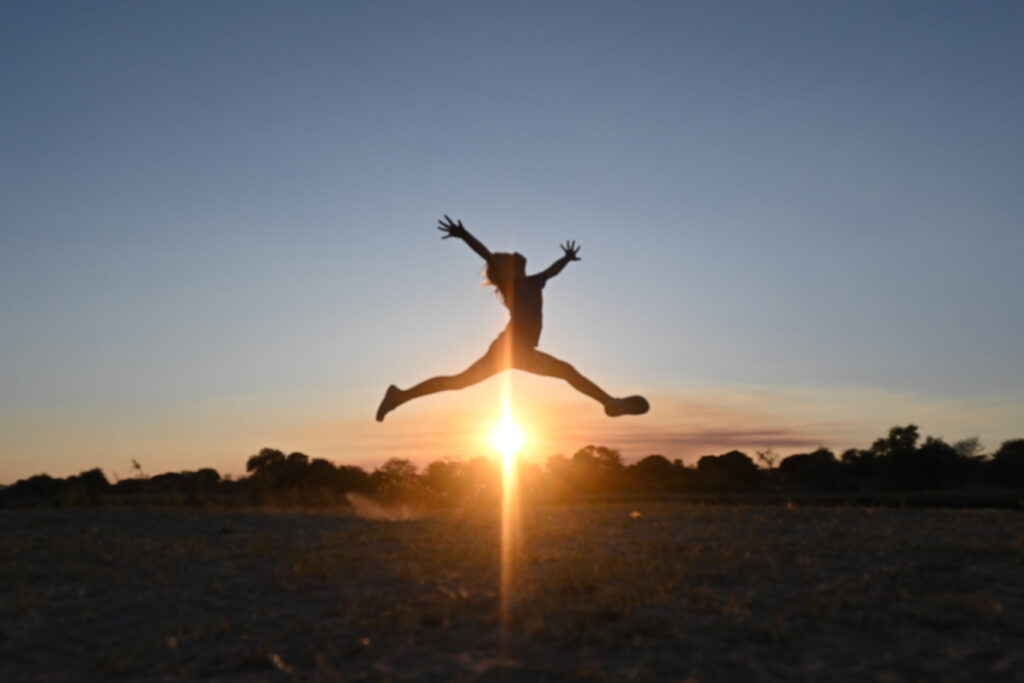
After leaving Etosha, we had three nights to make our way leisurely towards Bwabwata National Park and the Zambezi Region. Two of these nights were our last wild camps for a while, 1 of which was next to the Kavango River, which is the border between Namibia and Angola in this area (the river is called Cubango in Angola, Kavango in Namibia, and Okavango in Botswana).

It was a beautiful spot and we enjoyed chatting to the locals who were down at the river to collect water, wash, and play. We also loved waking up to crowing roosters (who were actually in Angola) and seeing our first hippos wallowing in the river!
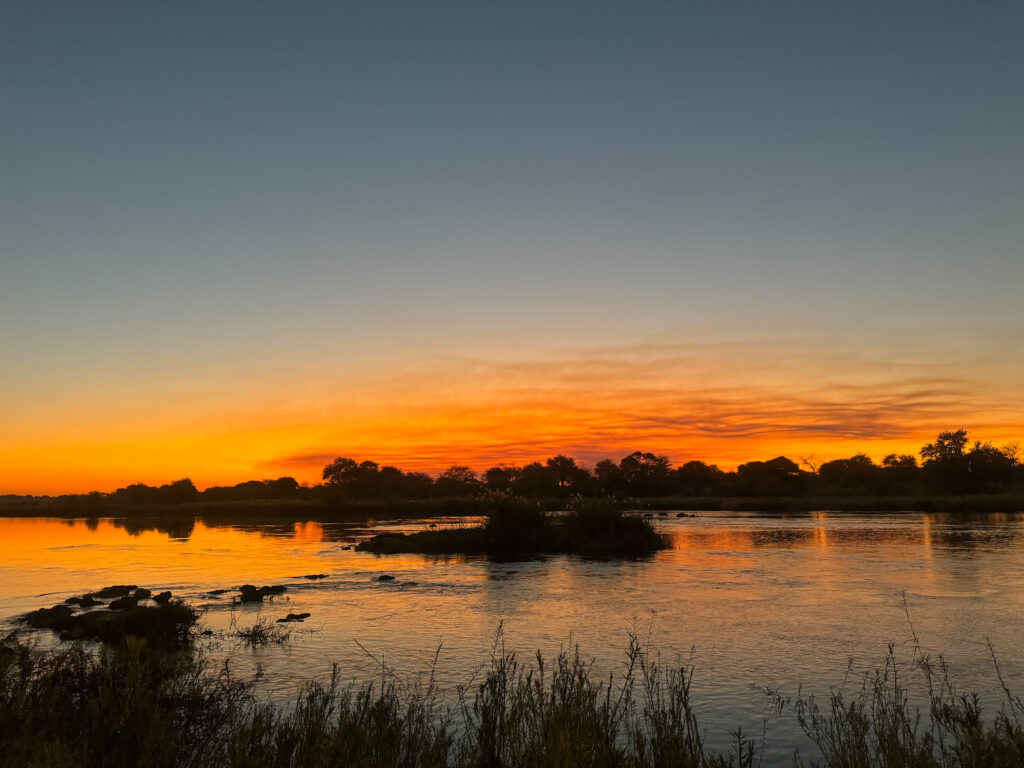
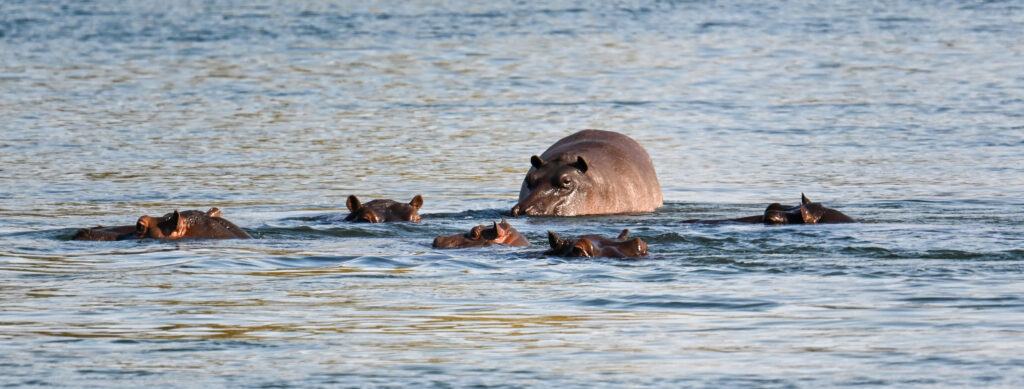
We also had a night at Grootfontein – a place famous for hosting the biggest meteorite to be found on Earth. The Trip Advisor and Google reviews didn’t rate it worthy of its high entry fee so we gave it a miss, but we were glad to meet a fascinating Kiwi family who have lived in Kenya for 10 years running their own non-profit organisation BeyondWater with a mission “To raise the living standards and reduce mortality rates for communities in East Africa through the provision of safe, clean and sustainable drinking water and sanitation facilities”. What a life well-lived to have made such a difference to so many people’s lives! The Girl Project is particularly incredible! If you’re interested in reading more, or even donating to their organisation, have a look here: https://beyondwater.global/
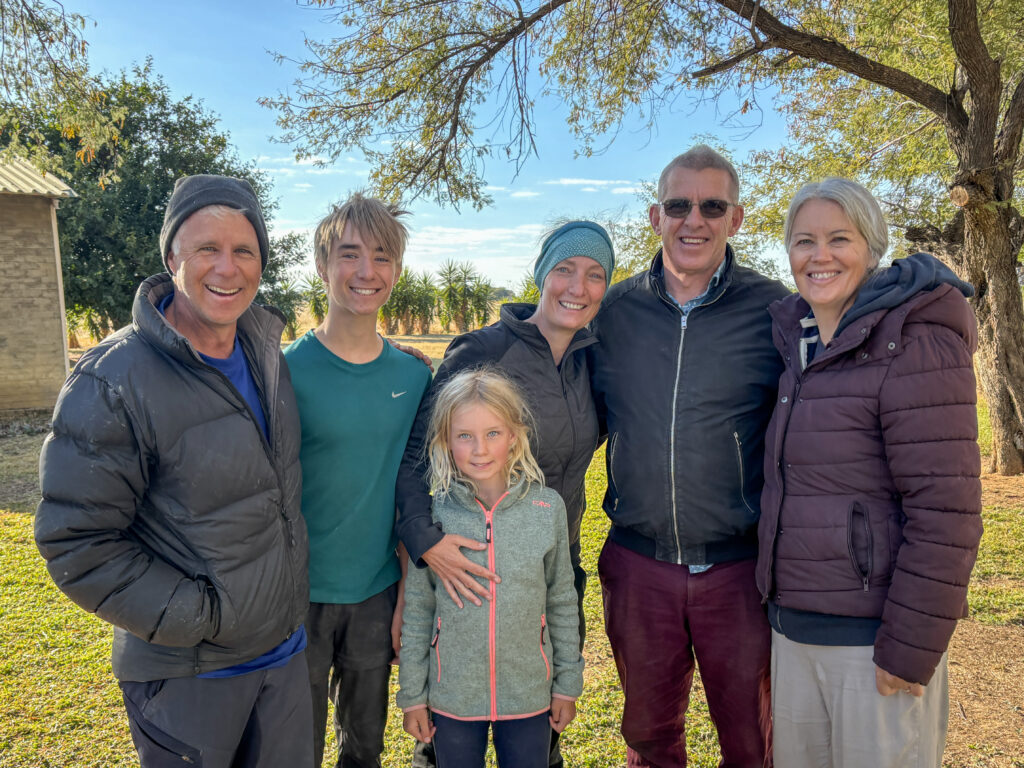
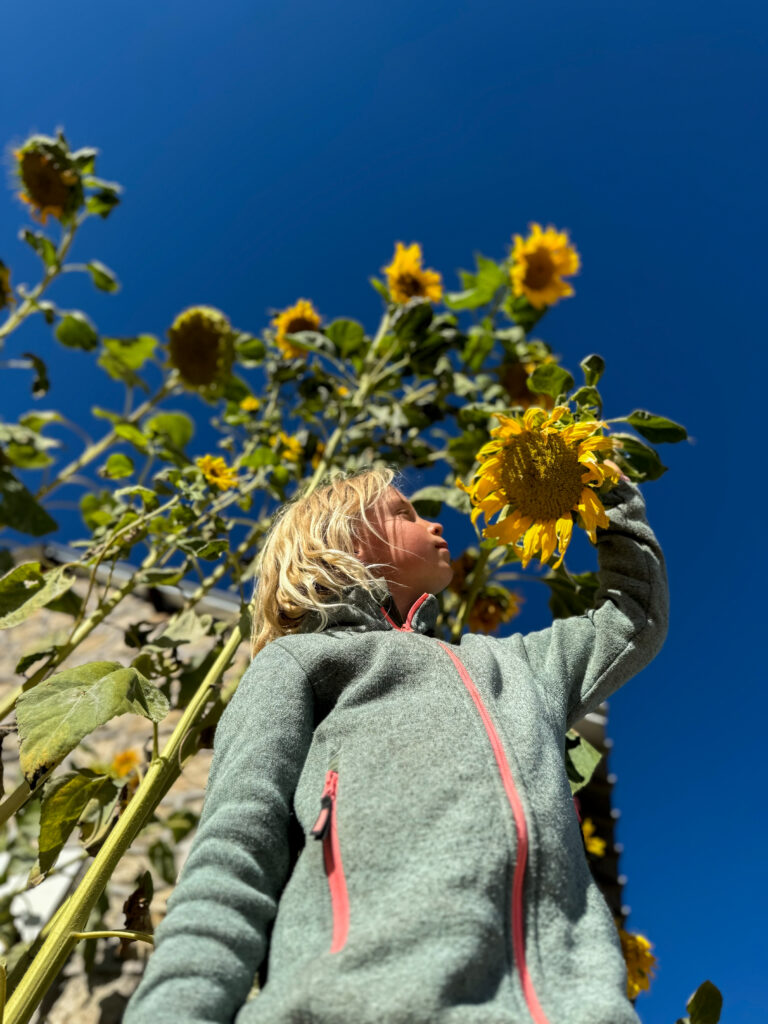
Our next stop was Ndhovu Lodge Camp – a lovely camp right beside the Kavango River with a healthy population of hippos right beside the camp.
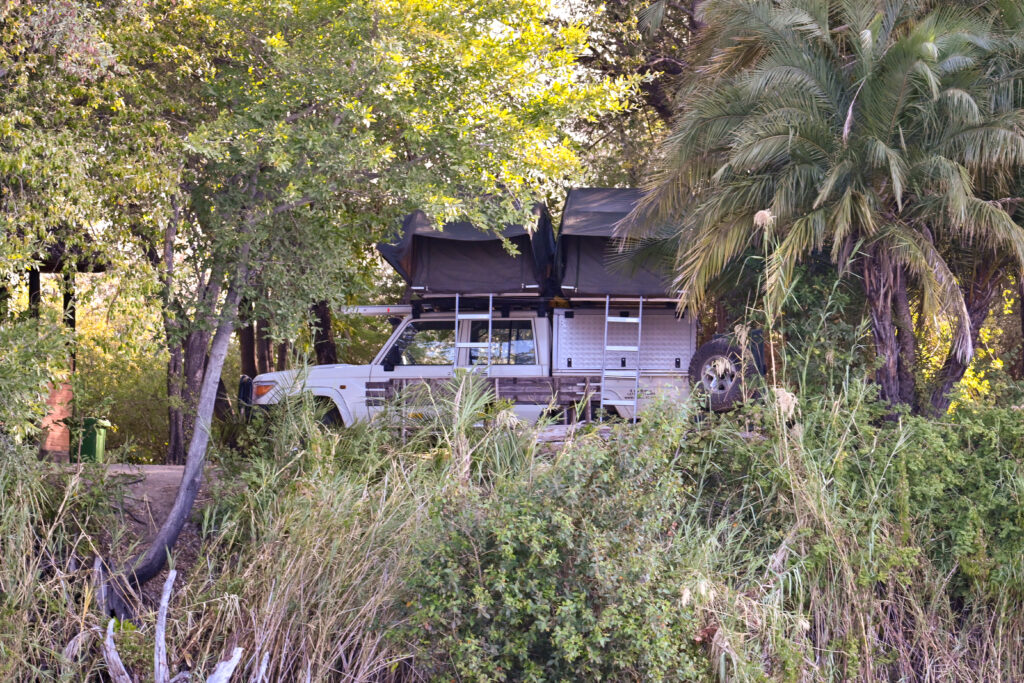
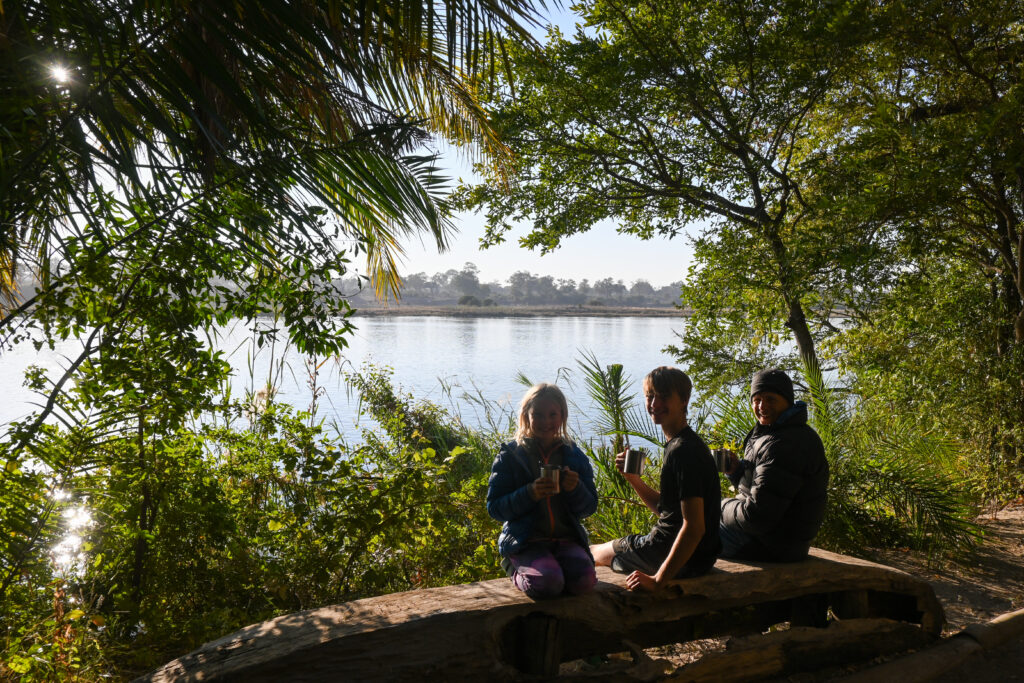

The Bwabwata National Park is on the other side of the river so we spent three blissful days chilling out watching elephants, a variety of antelope, buffalos, warthogs and hippos – it was a treat to not drive anywhere for what felt like days and days!
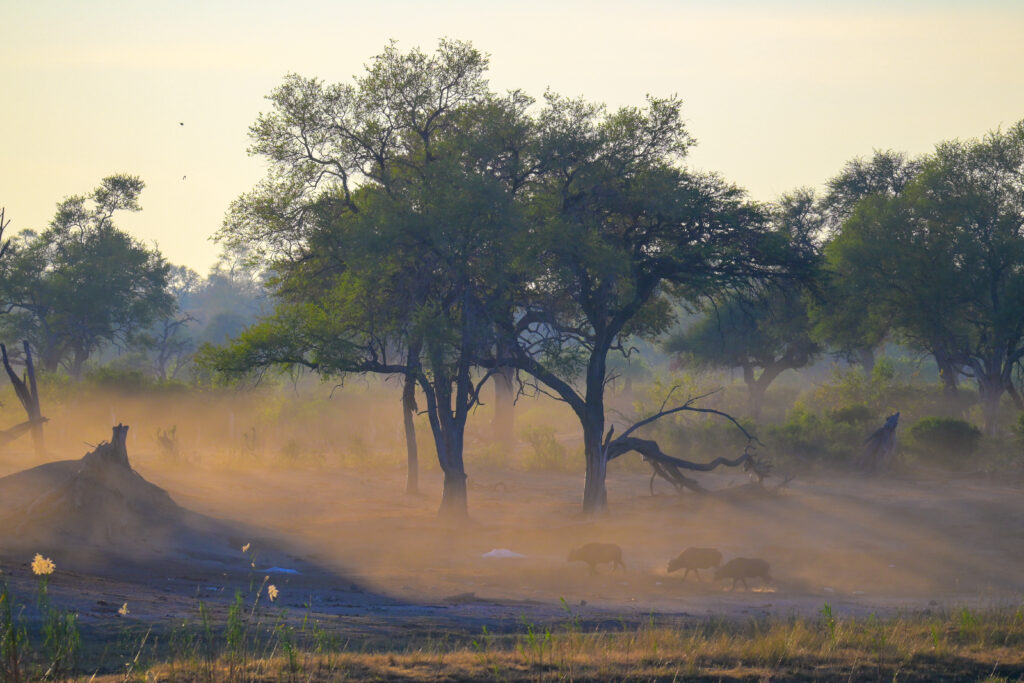
The hippos were so noisy as they grunted and snorted at each other, and they sounded particularly loud in the still of the night!
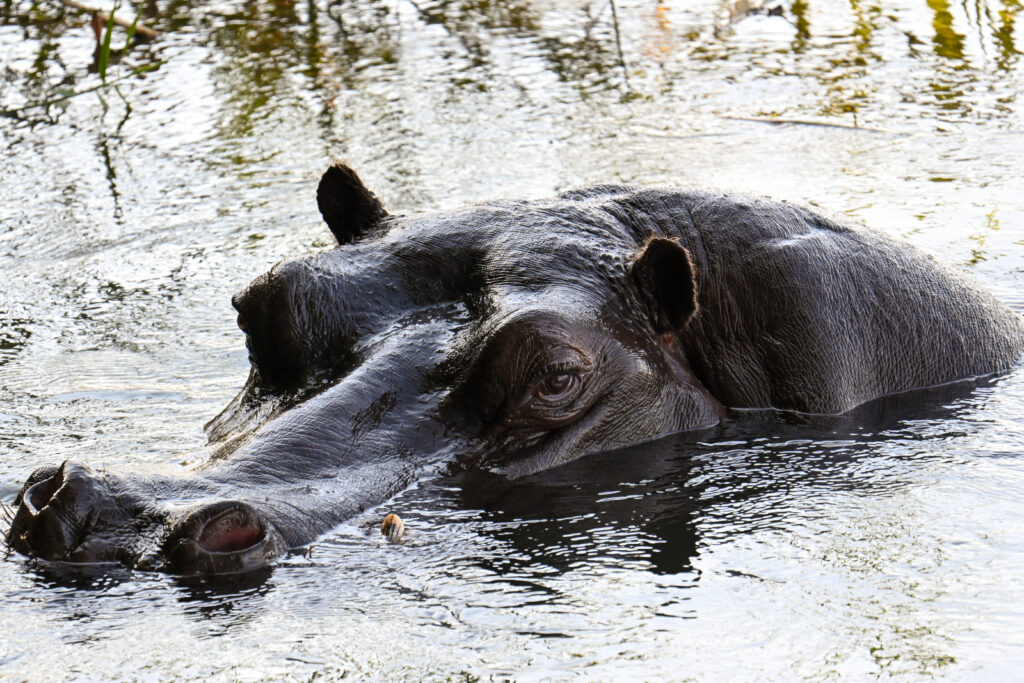
We took a lovely sunset boat safari where we saw more hippos, crocodiles, monitor lizards, and so many different varieties of birds. The guide and other passengers were most impressed by the kids’ interest and quick identification of the animals, particularly the birds. We have some animal and bird guide books and the kids have made such good use of them and have become quite the experts!


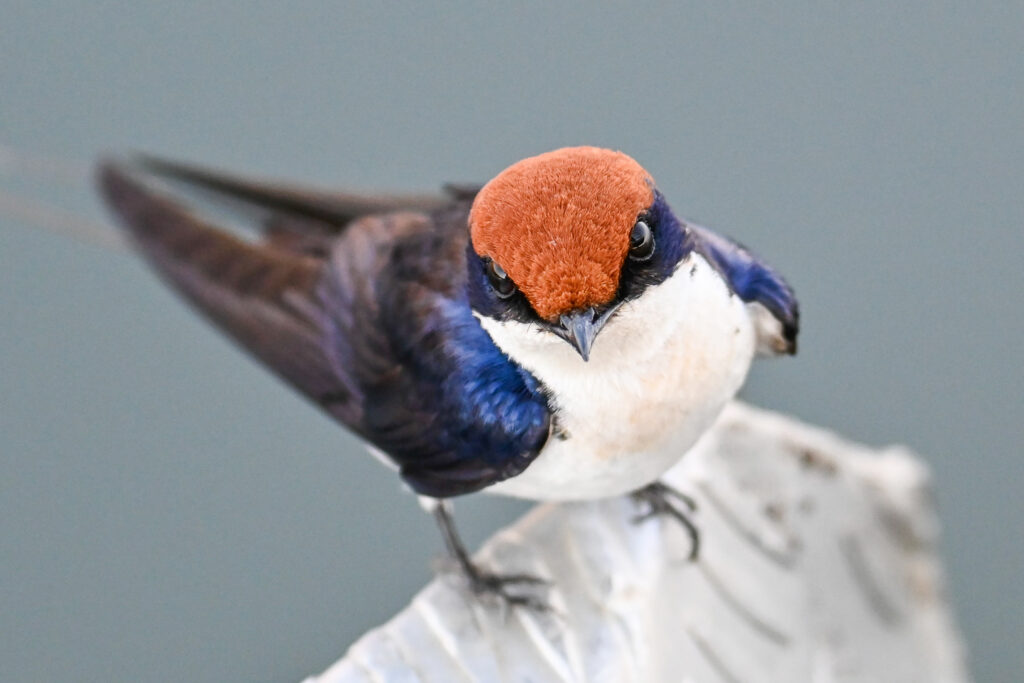
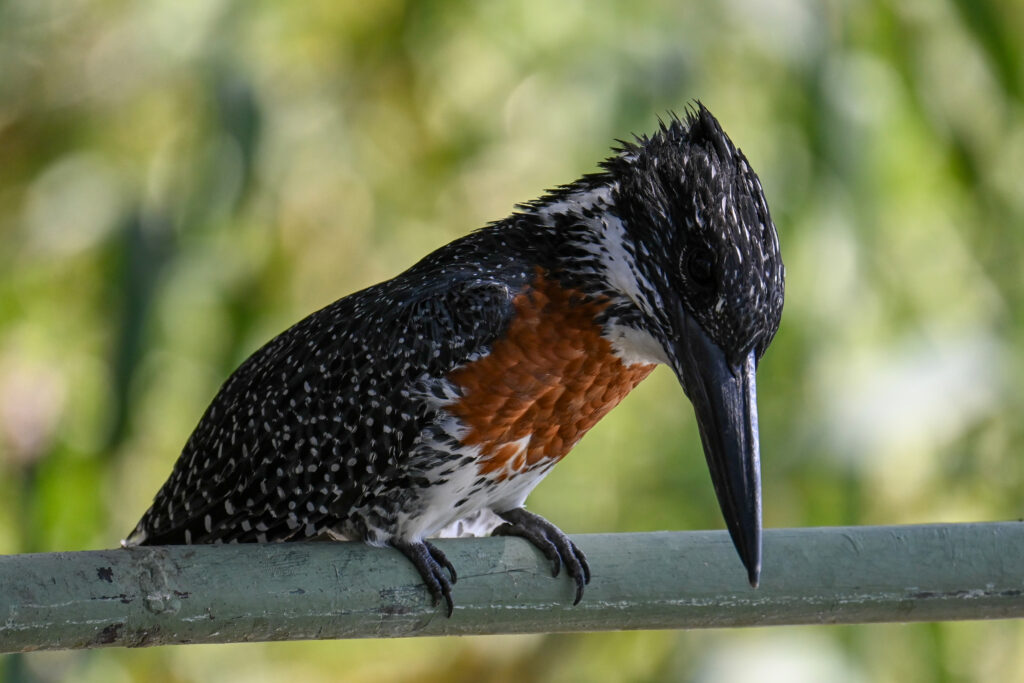
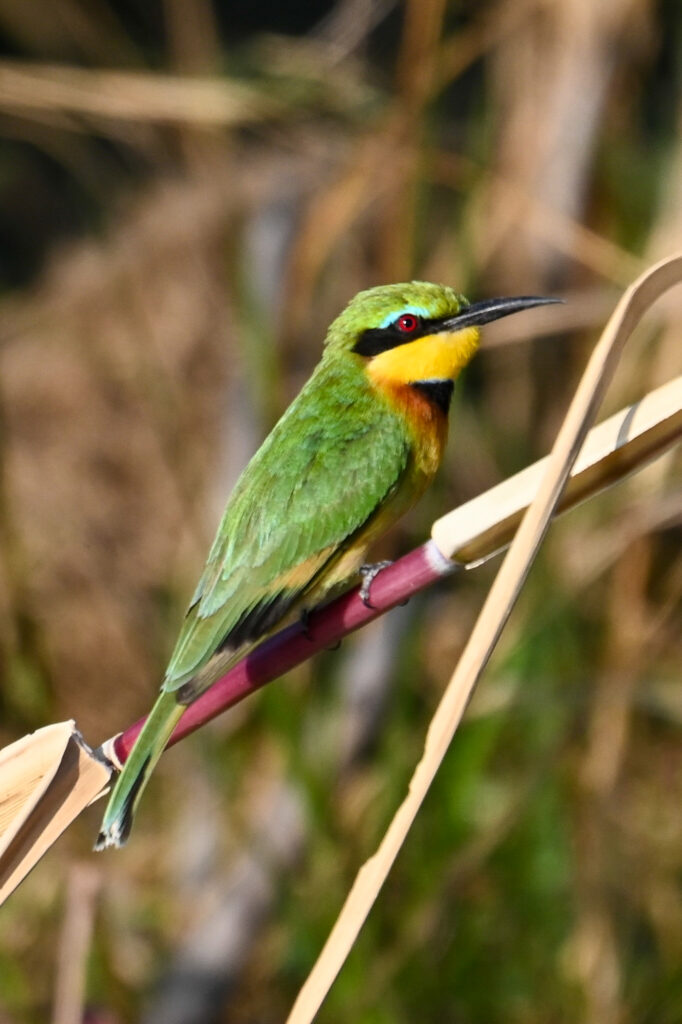
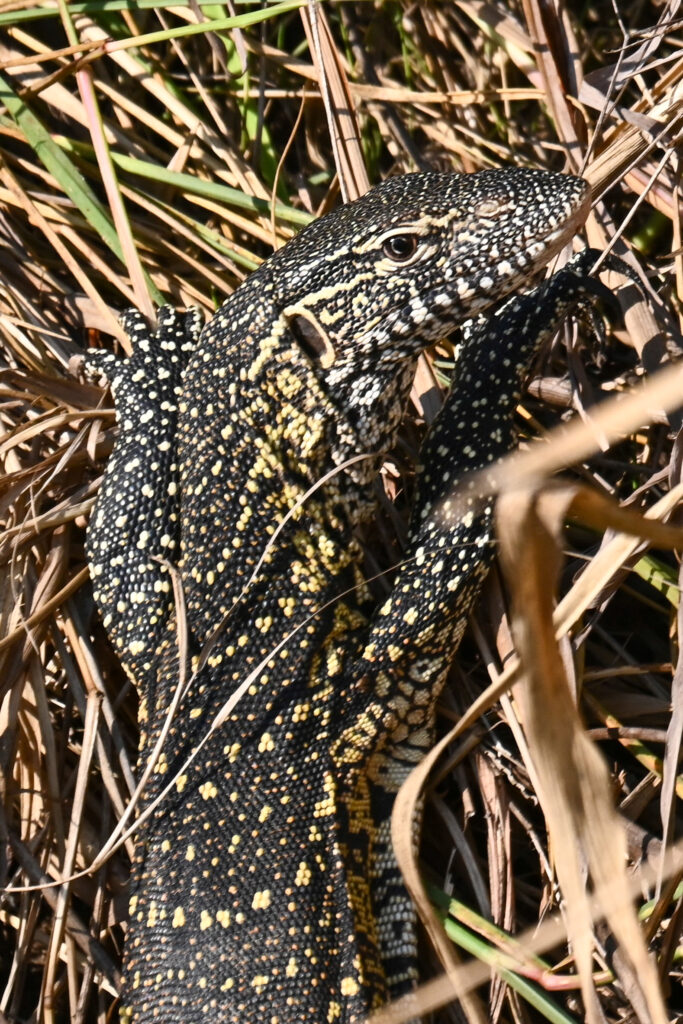
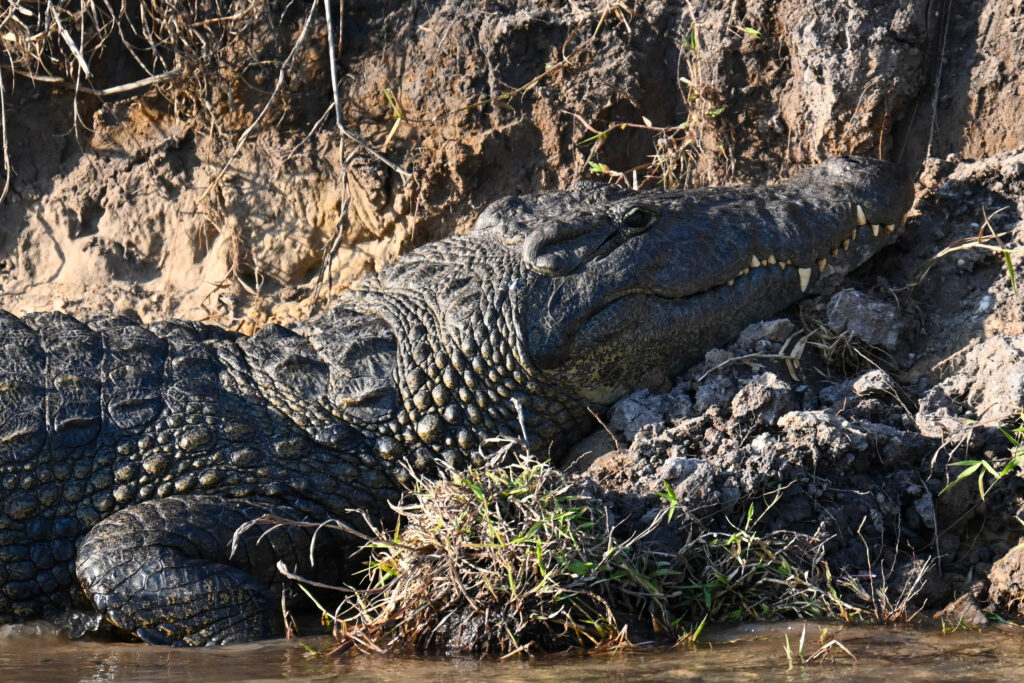
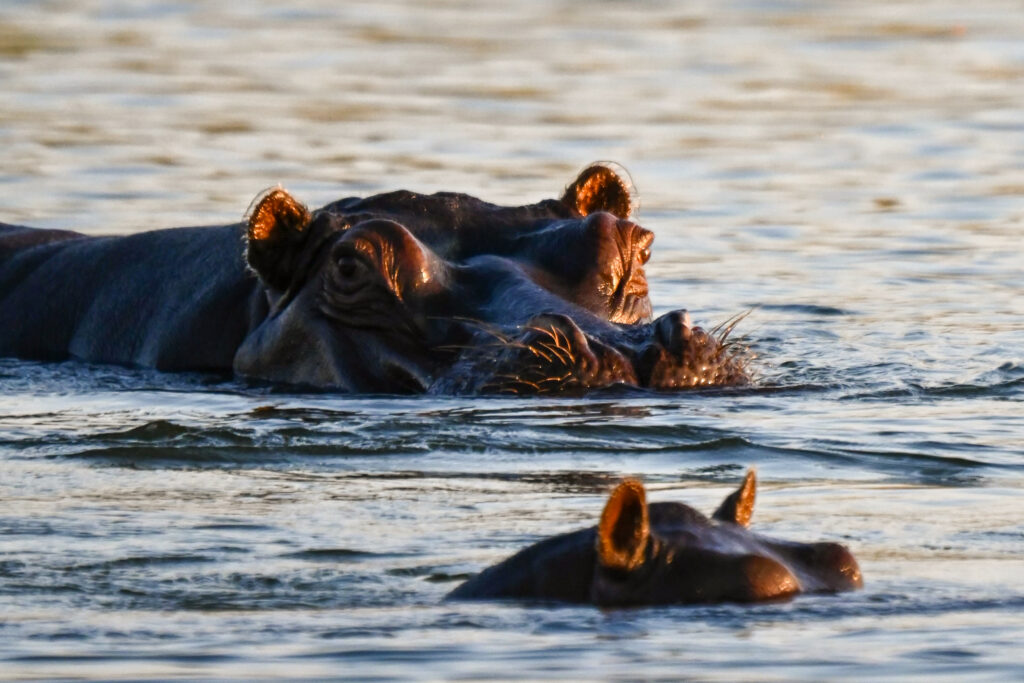
Our last night in Namibia (for now) was spent in the Zambezi Region. The camp had Canadian canoes for the guests so we went for a sunset paddle – and were glad to see neither hippos or crocodiles!
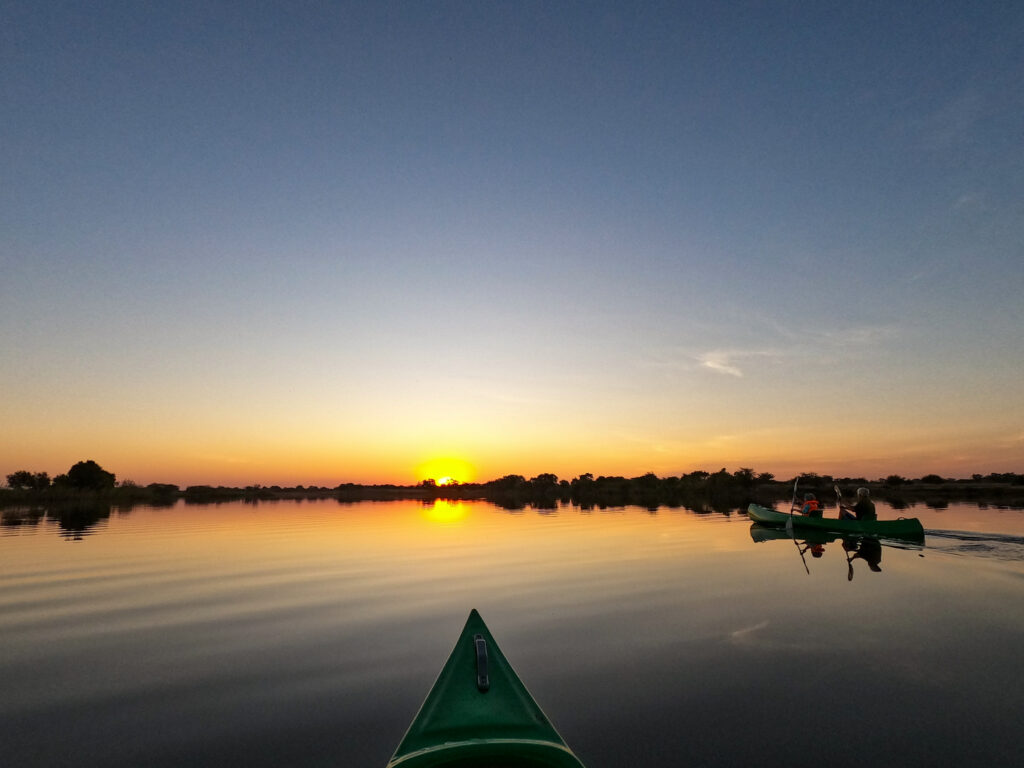
We had originally thought we would visit Victoria Falls from the Zimbabwe side but had a change of plan and stayed in Livingstone on the Zambia side instead. The falls are apparently better from the Zim side but with it being the dry season, and this year being particularly dry, we figured the falls would be far from their usual spectacular, and focussed on other highlights of the area.
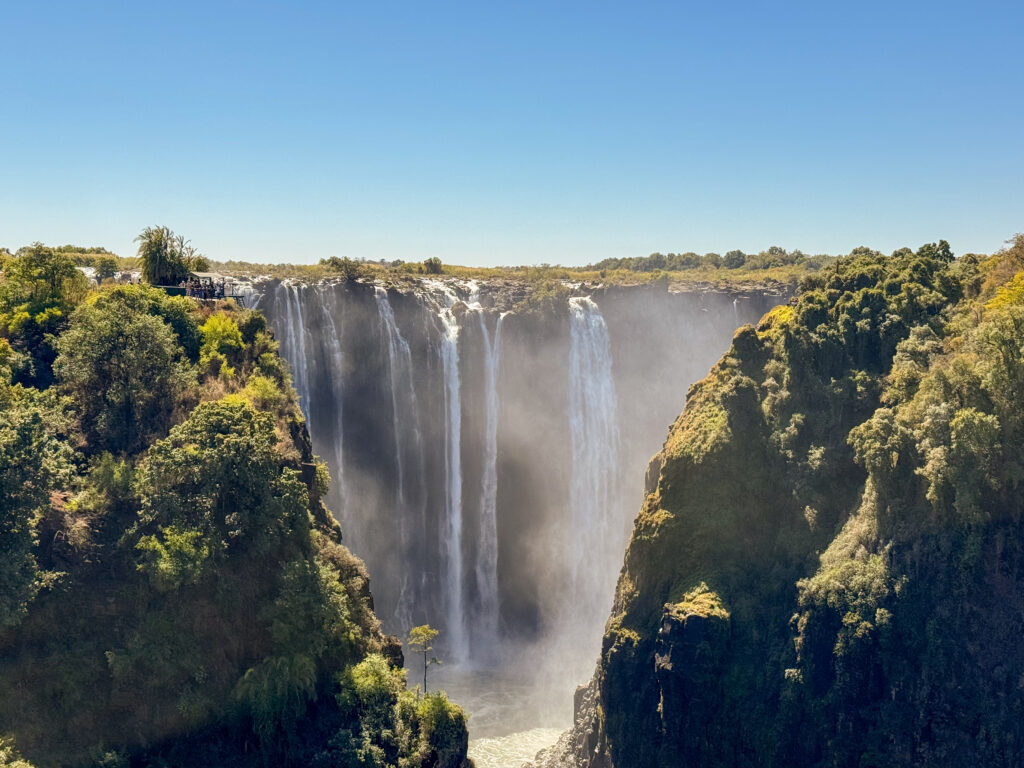
To get to Livingstone, we had to cross the border from Namibia to Botswana and then again into Zambia. A few years ago, Zambia decided to allow people from many countries into Zambia without needing a visa, which we were really grateful for (we also didn’t need visas for South Africa, Namibia or Botswana, but would have needed to buy them at the border for Zimbabwe). This gratefulness, however, is really tested with an unbelievably slooooooooow system to actually cross the border. Spending 2 hours going from window to window to window, answering the same questions over and over, and waiting and waiting for we’re-not-sure-what but someone had said “wait here”…it was an exercise in patience! Thankfully we had previously read that it could take 1-2 hours to cross into Zambia so we weren’t worried that we had done anything wrong.
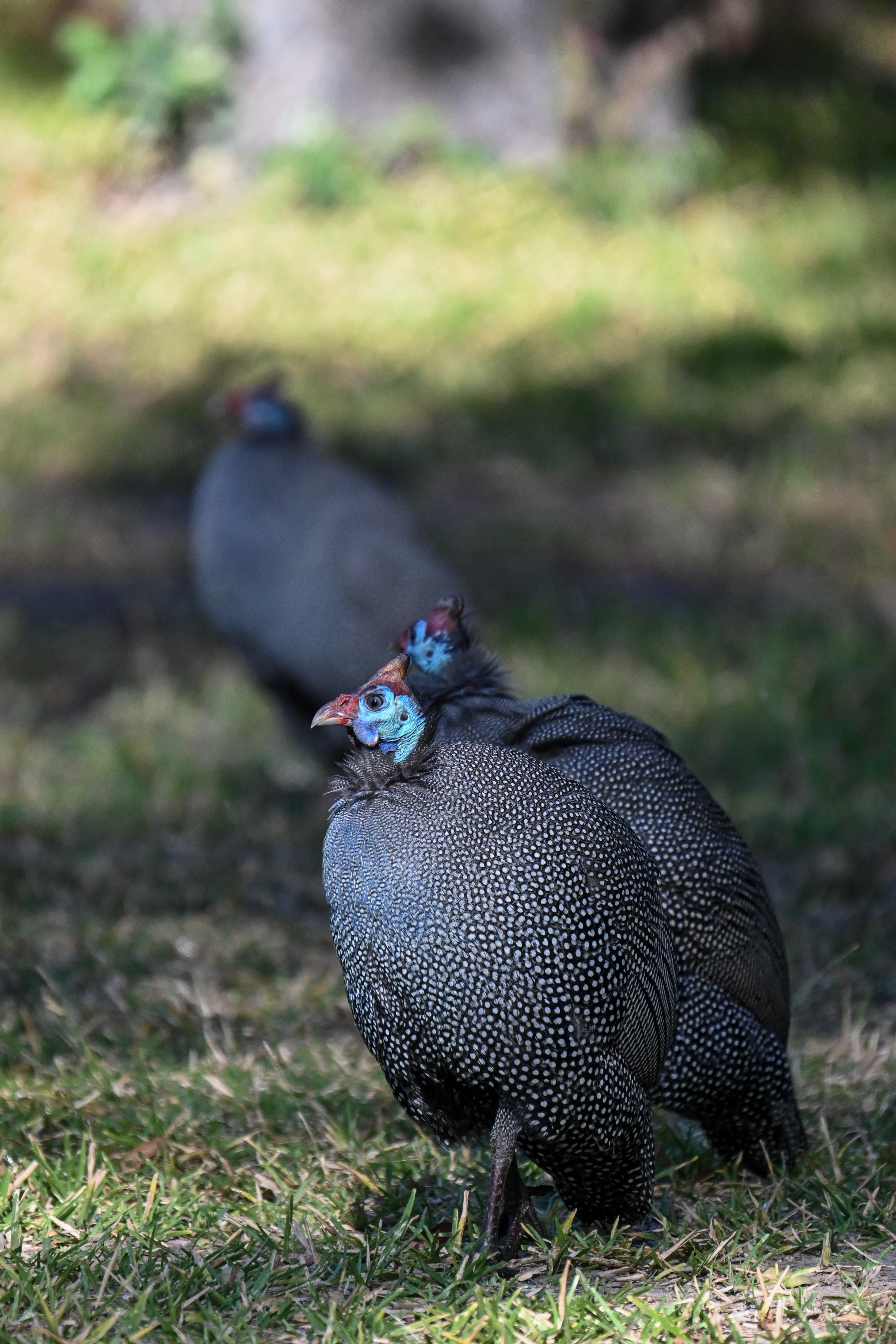
The Kiwis we met in Grootfontein gave us some excellent tips about the Mosi-oa-Tunya National Park, so that was at the top of our list of things to do in Livingstone. Mosi-oa-Tunya National Park is Zambia’s smallest national park, so you can self-drive it in only a few hours, and there are no predators so you are allowed to walk in the park. Mosi-oa-Tunya is also home to a small population of white rhino. In 2008, the Zambia Wildlife Authority successfully relocated four white rhinos from South Africa to Mosi-oa-Tunya to create a new population on the north side of the Zambezi River. The rhinos appear to be happy in their new home as they have successfully bred there, and two of the females are currently pregnant.
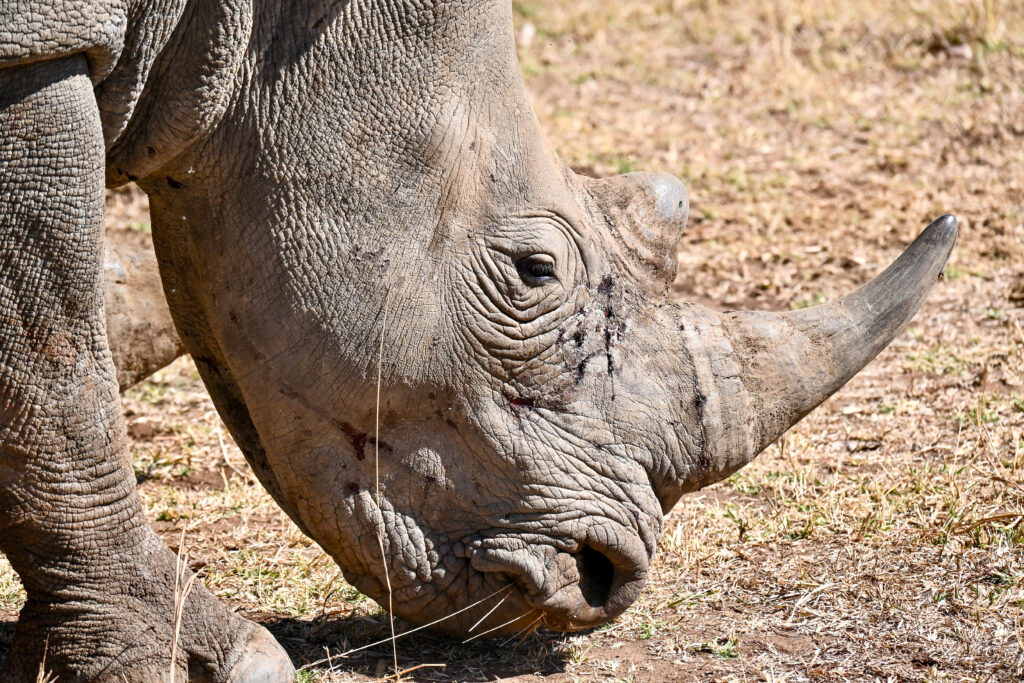
As there are so few rhinos in the park (and so few overall), they are under 24/7 guard by the Zambian Defence Force, who have instructions to “shoot to kill” if they come across poachers! We had a lovely morning in the park seeing a variety of big guys, little guys and birds. After a few hours, we rounded a corner and there were the rhinos! Two guards, armed with AK-47s, came over to us (how good to see one of them was a woman) and they instructed us on how to behave around the rhino and then led us over to them on foot. It was AMAZING! We were so close to the rhino and they just wandered beside us grazing on the grass. They were seemingly unbothered by the humans who were wide-eyed and thrilled to be near them. The guards were really knowledgeable and allowed us about 20 minutes with the rhino – it really was such a joy!

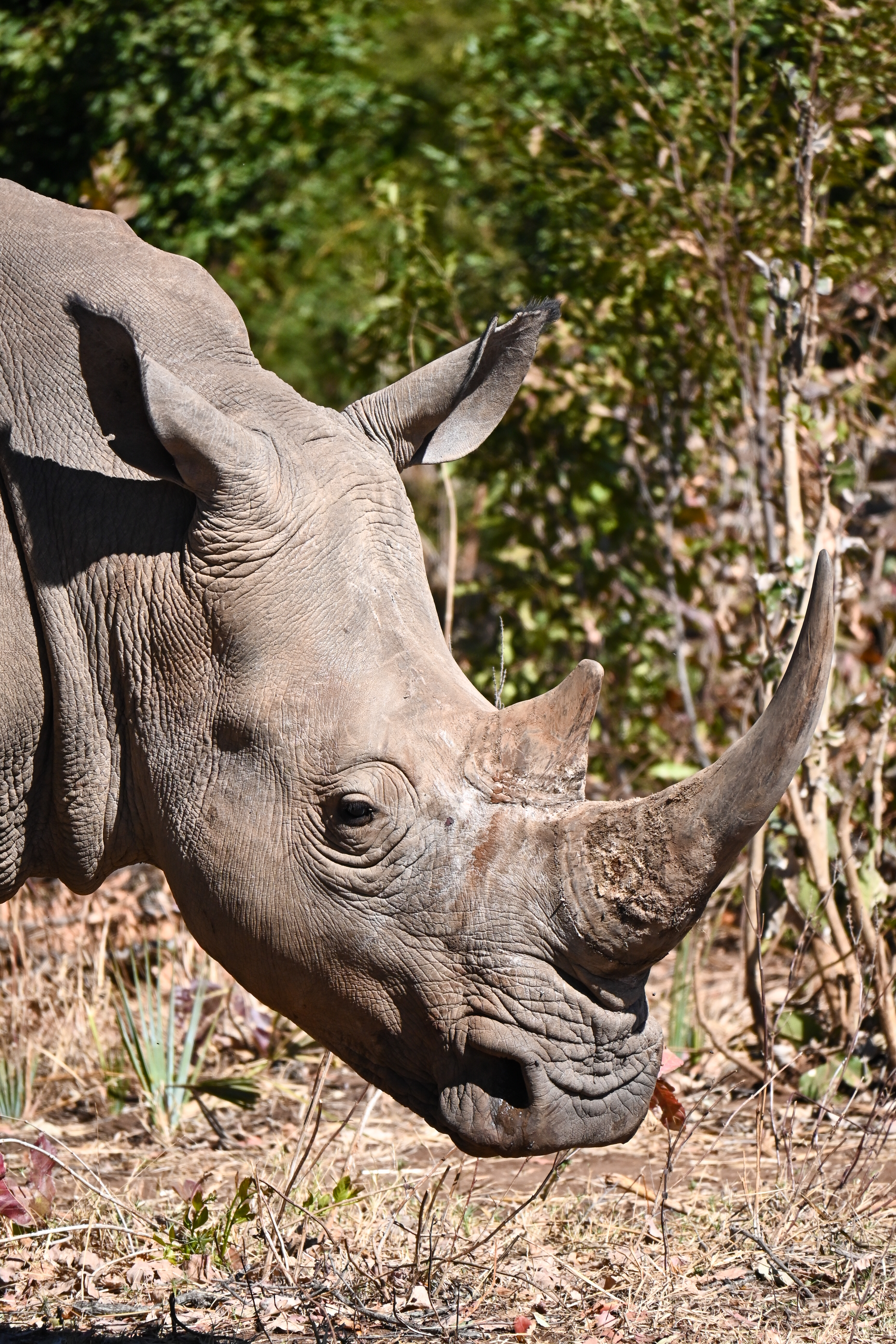
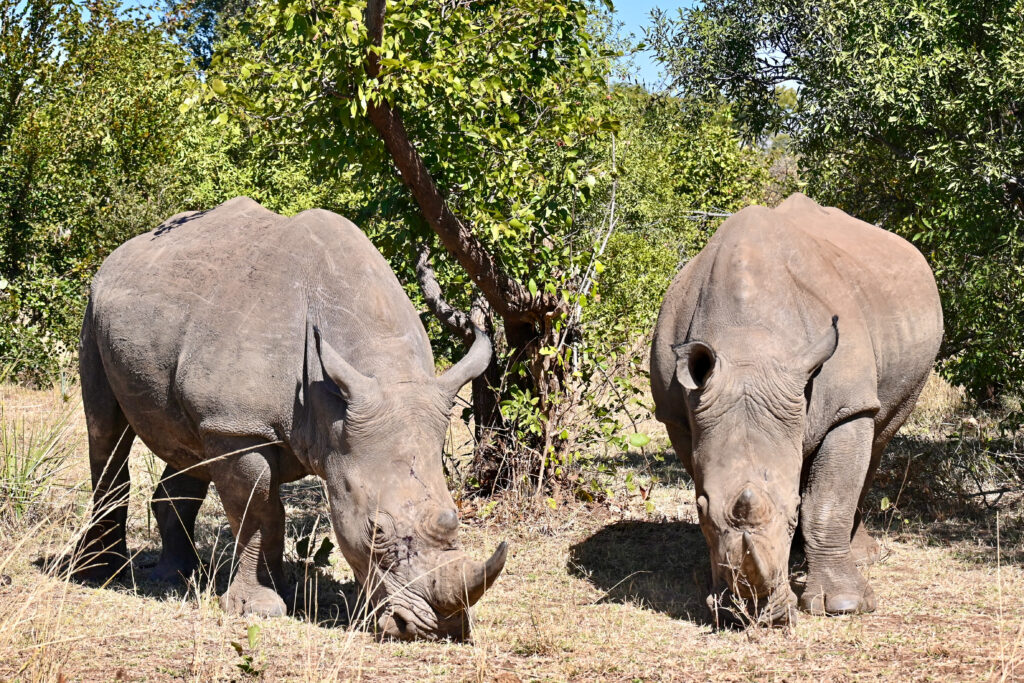
The second highlight of Livingstone was hurling ourselves into/across the Batoka Gorge at the bottom of Victoria Falls!

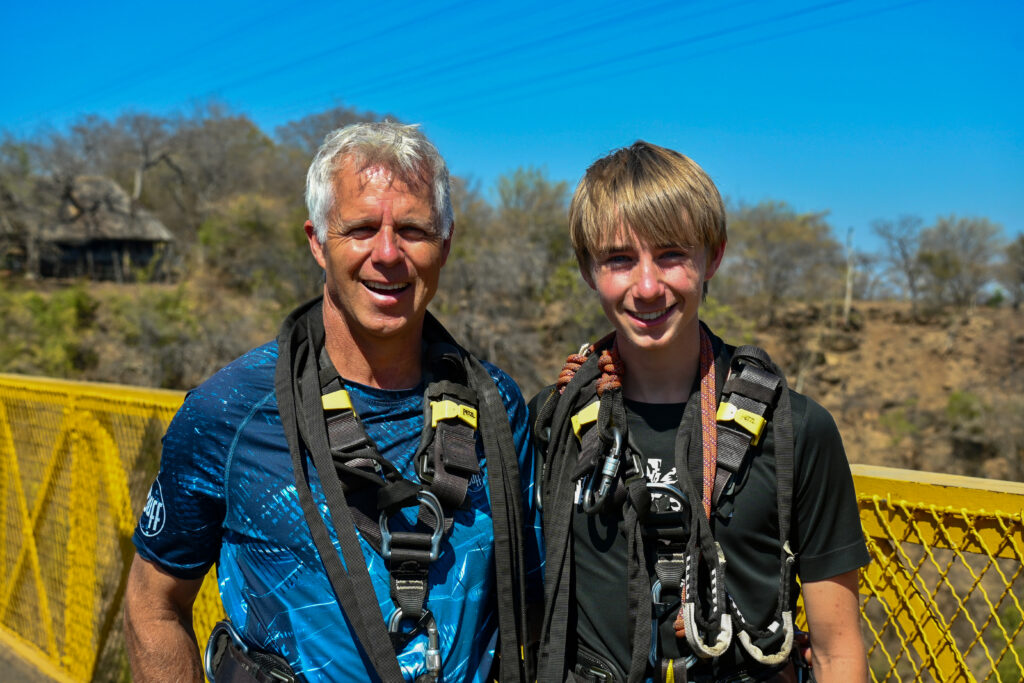
From Livingstone, we headed back to Botswana via a much speedier border crossing. We spent the next 8 days in the north of Botswana, driving east to west through parts of Chobe National Park and Moremi Game Reserve in the Okavango Delta.
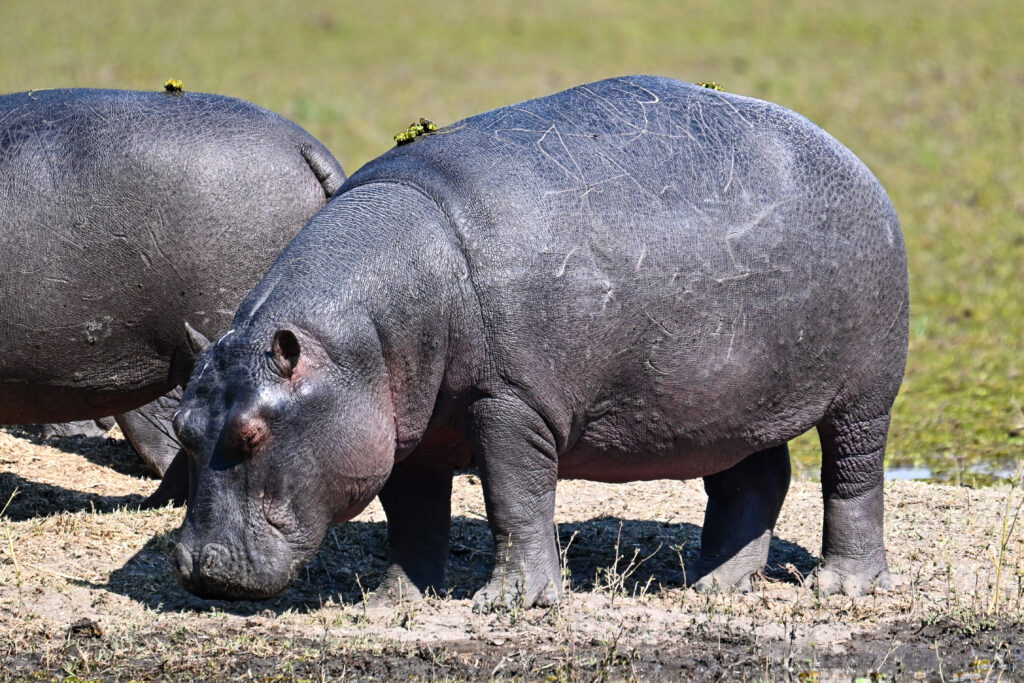
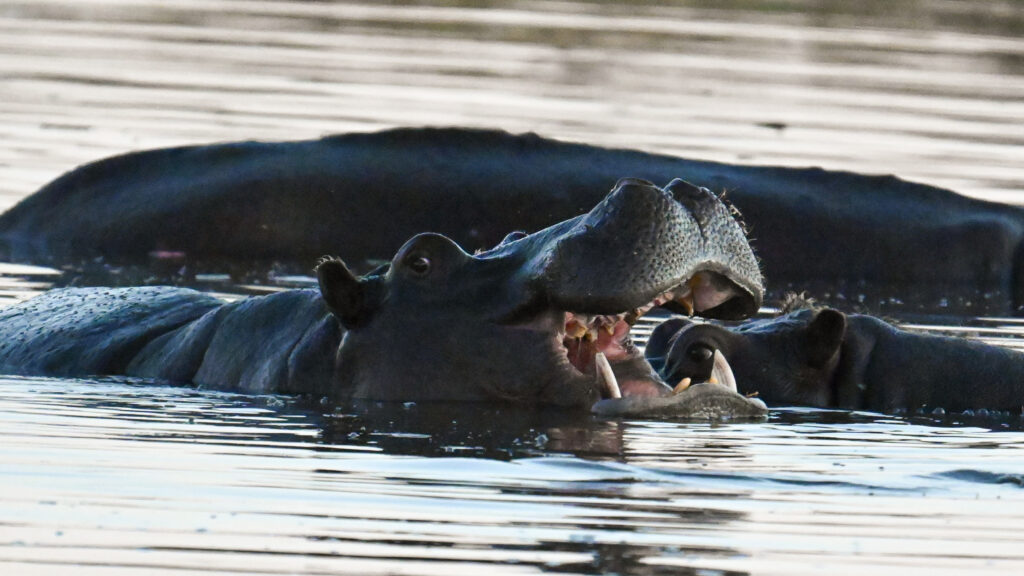
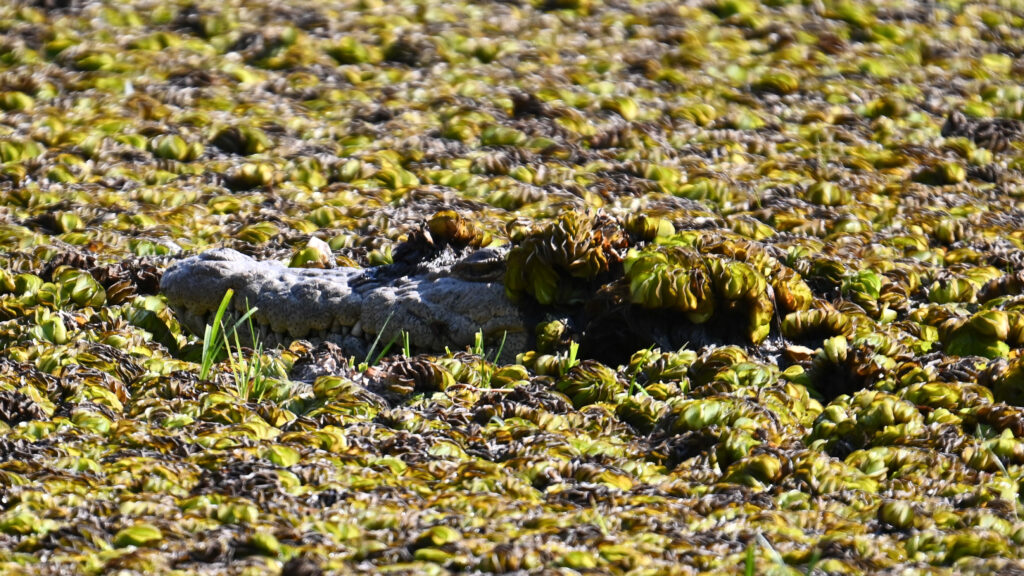

Botswana was not originally on our itinerary (we were planning on returning to Cape Town via inland Namibia) but Logan watched a documentary on the Okavango Delta a year ago and Botswana was quickly added to our trip.
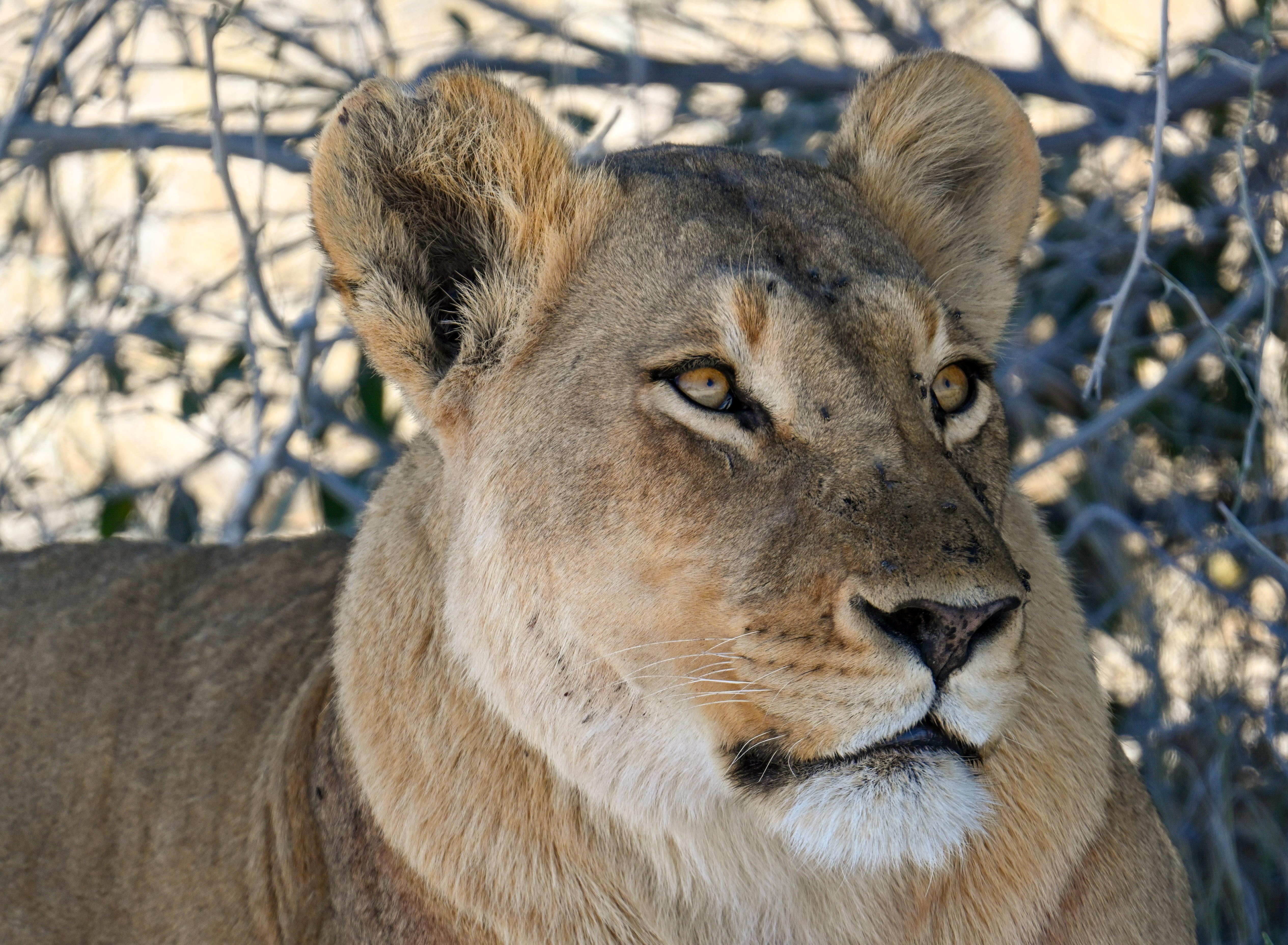

These 8 days were absolutely incredible! The landscape was ever changing – dry sandy pans spreading out into the distance, deep pools in the flooded delta reflecting the beauty around them, dense areas with tell-tale signs that elephants had crashed their way through recently, waterholes with a constant parade of thirsty animals, and swampy marshlands and tannin-stained rivers surrounded with herds of animals and filled with bobbing hippos.
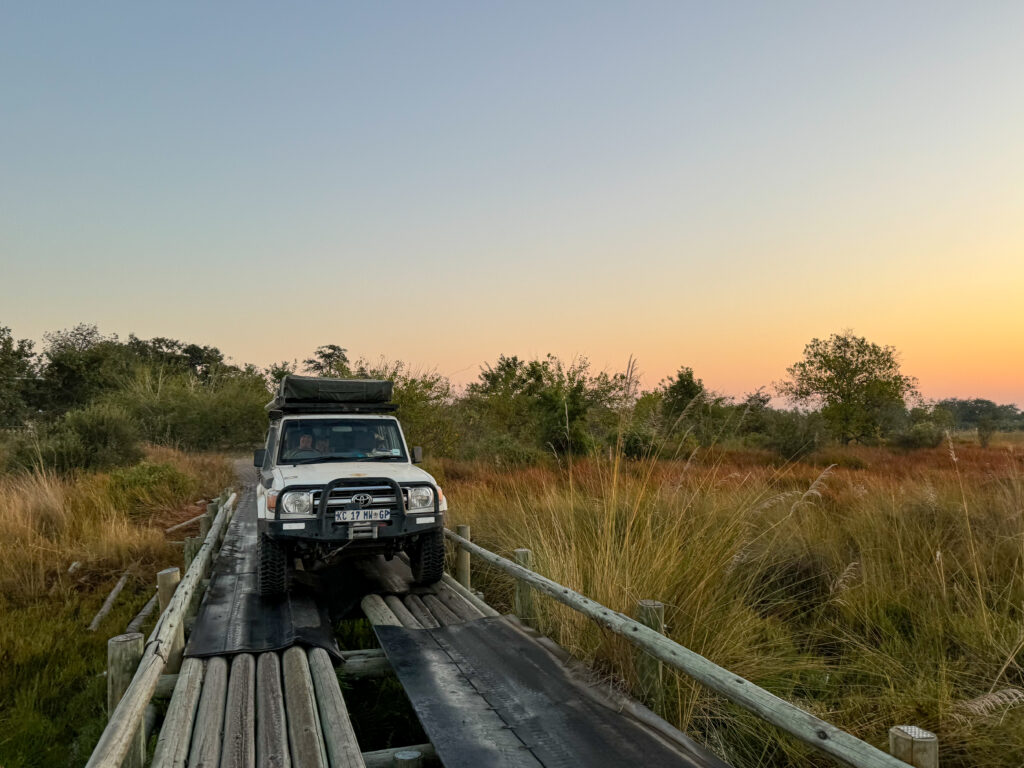

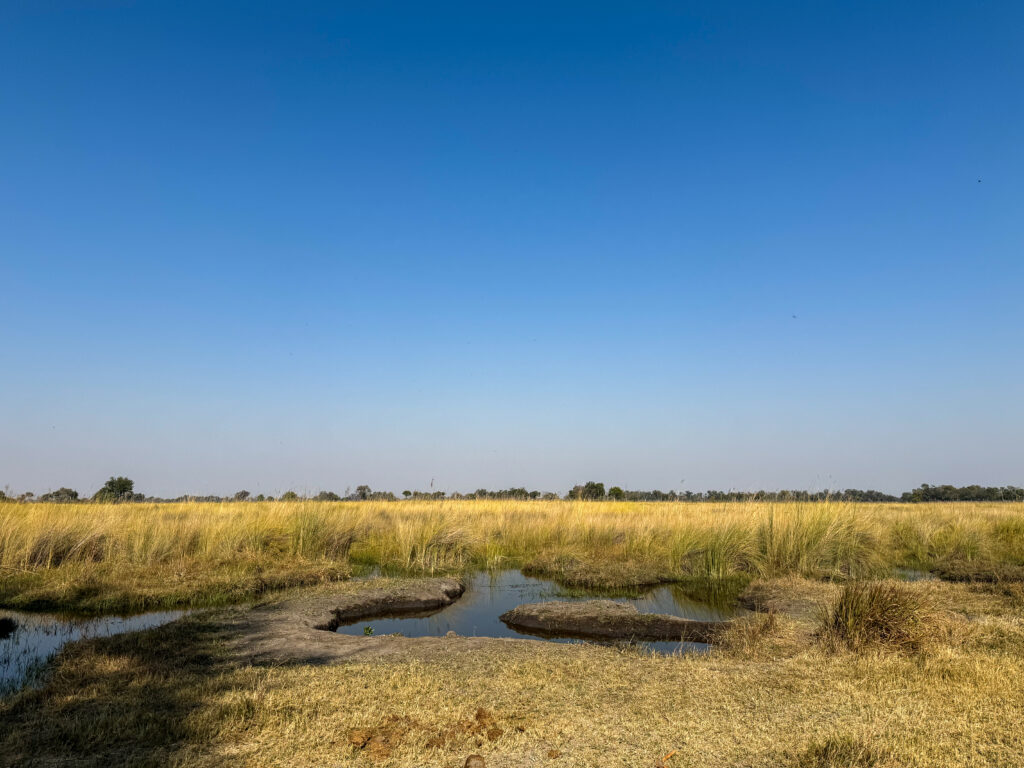


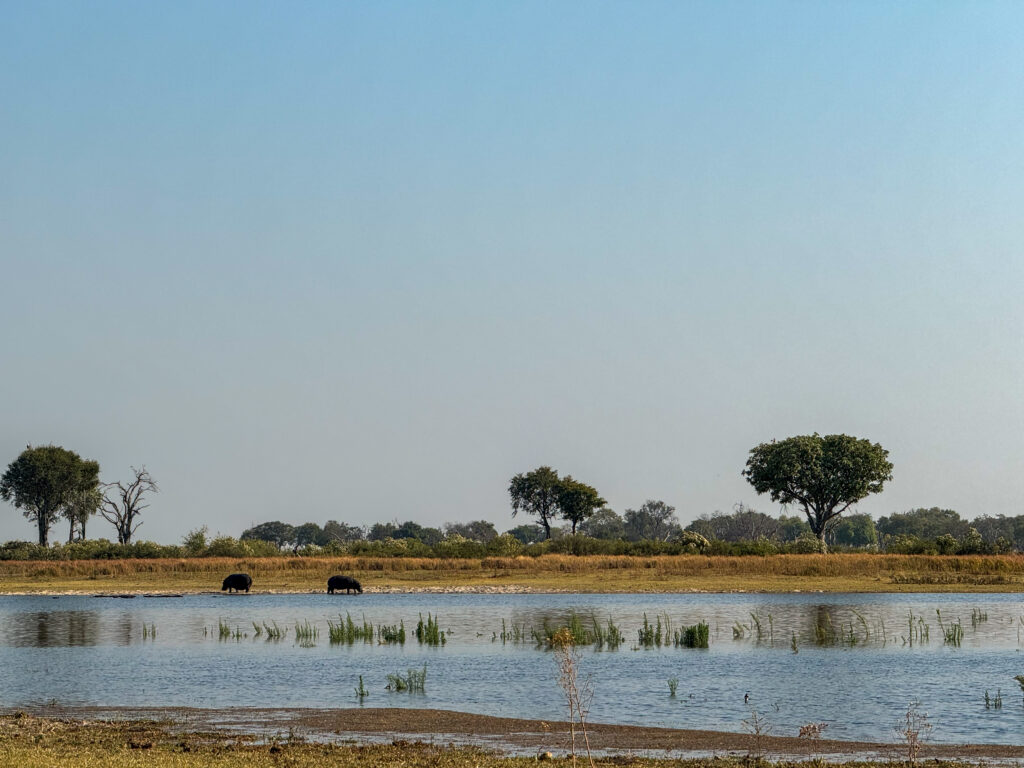
We were up well before the sun rose so that we could start our self-drive safaris in the golden glow of the morning, and then often went out again in the late afternoon – never tiring of the stunning African sunrises and sunsets.

We were so thrilled to spend some time observing this leopard – so sleek and perfectly poised.

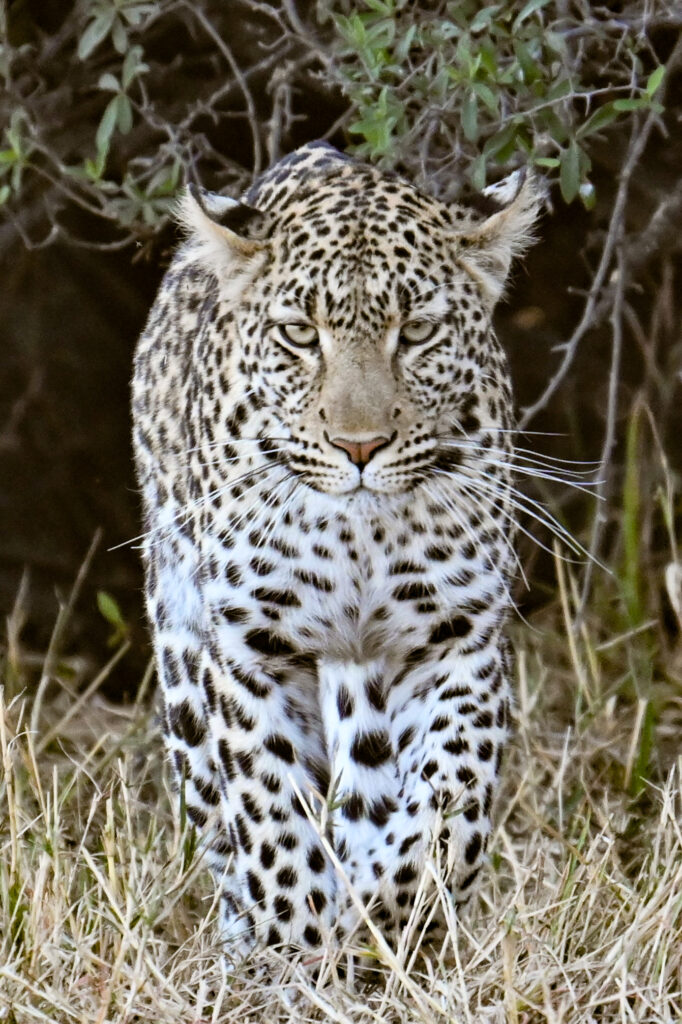
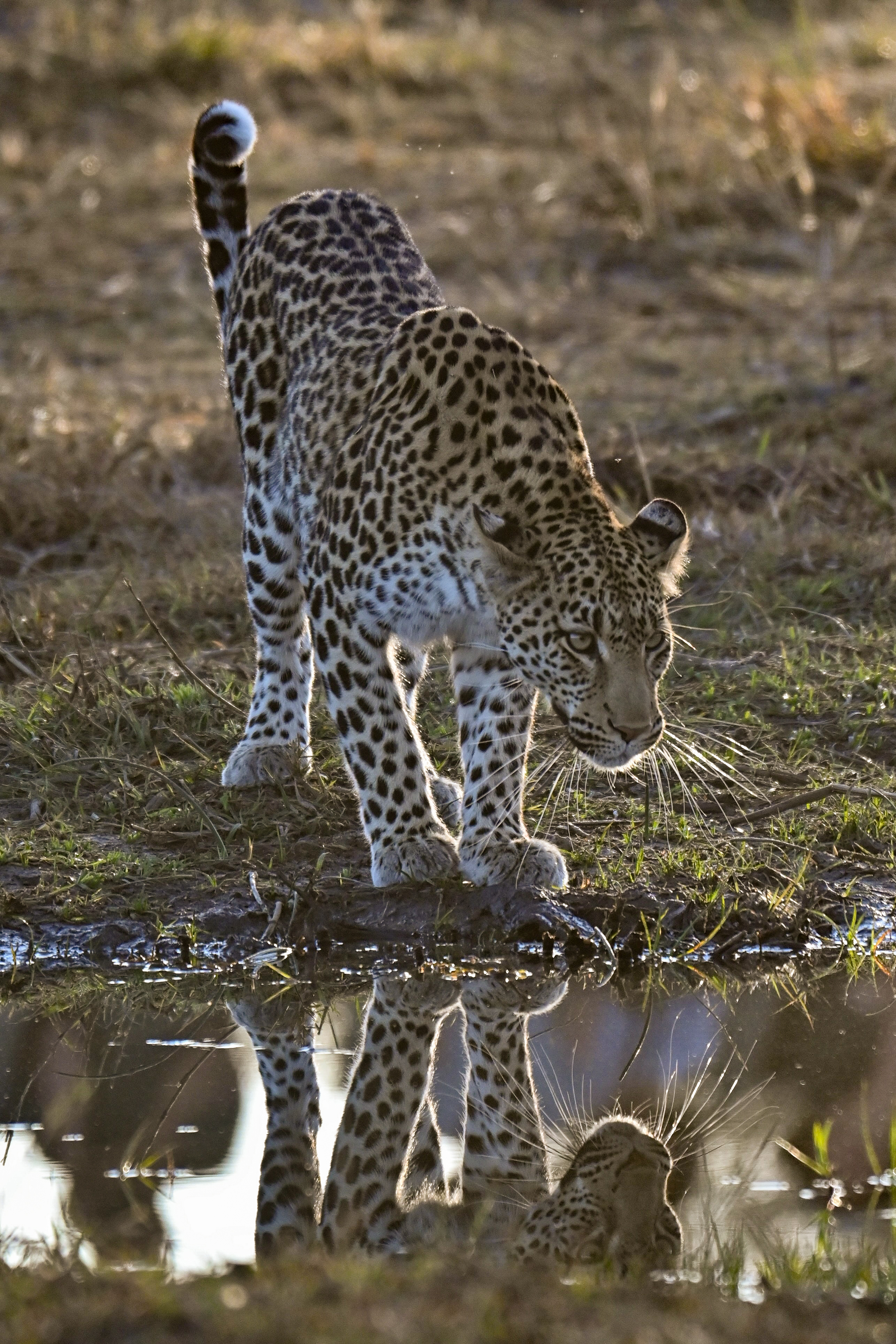
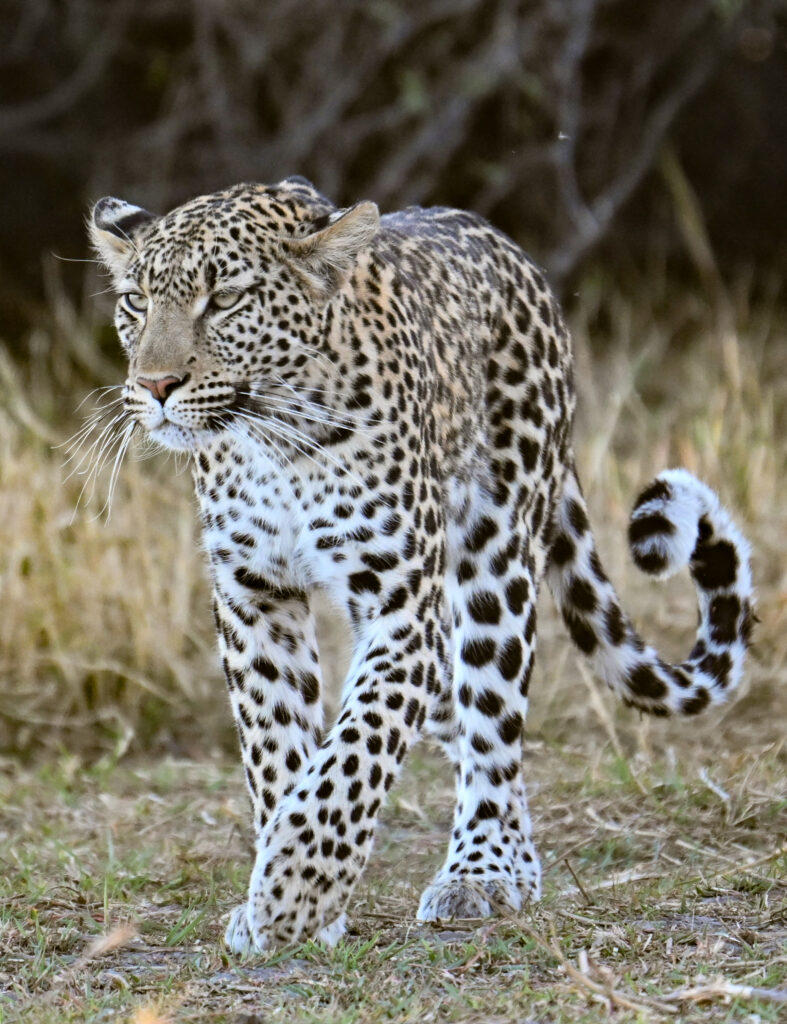
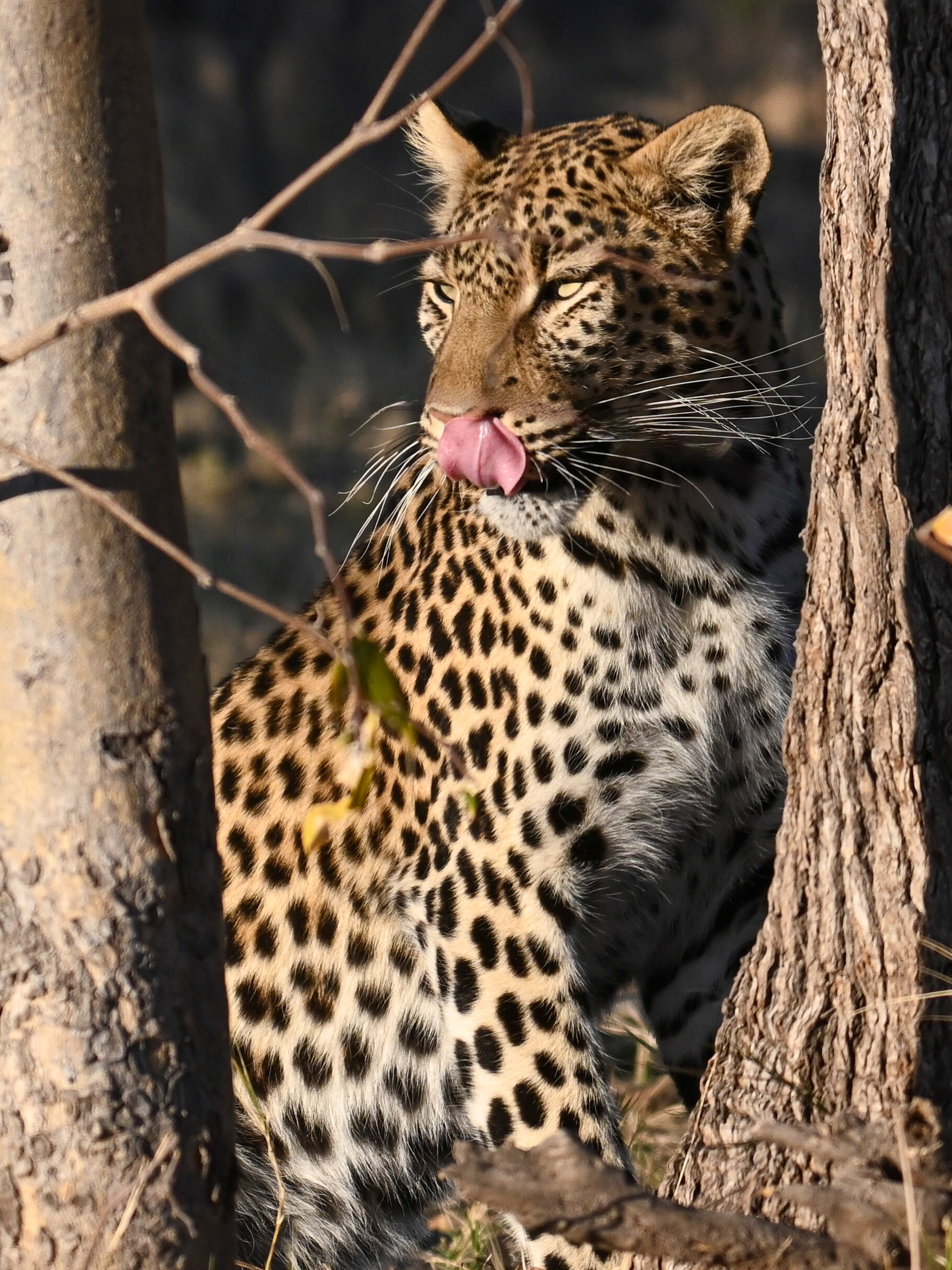
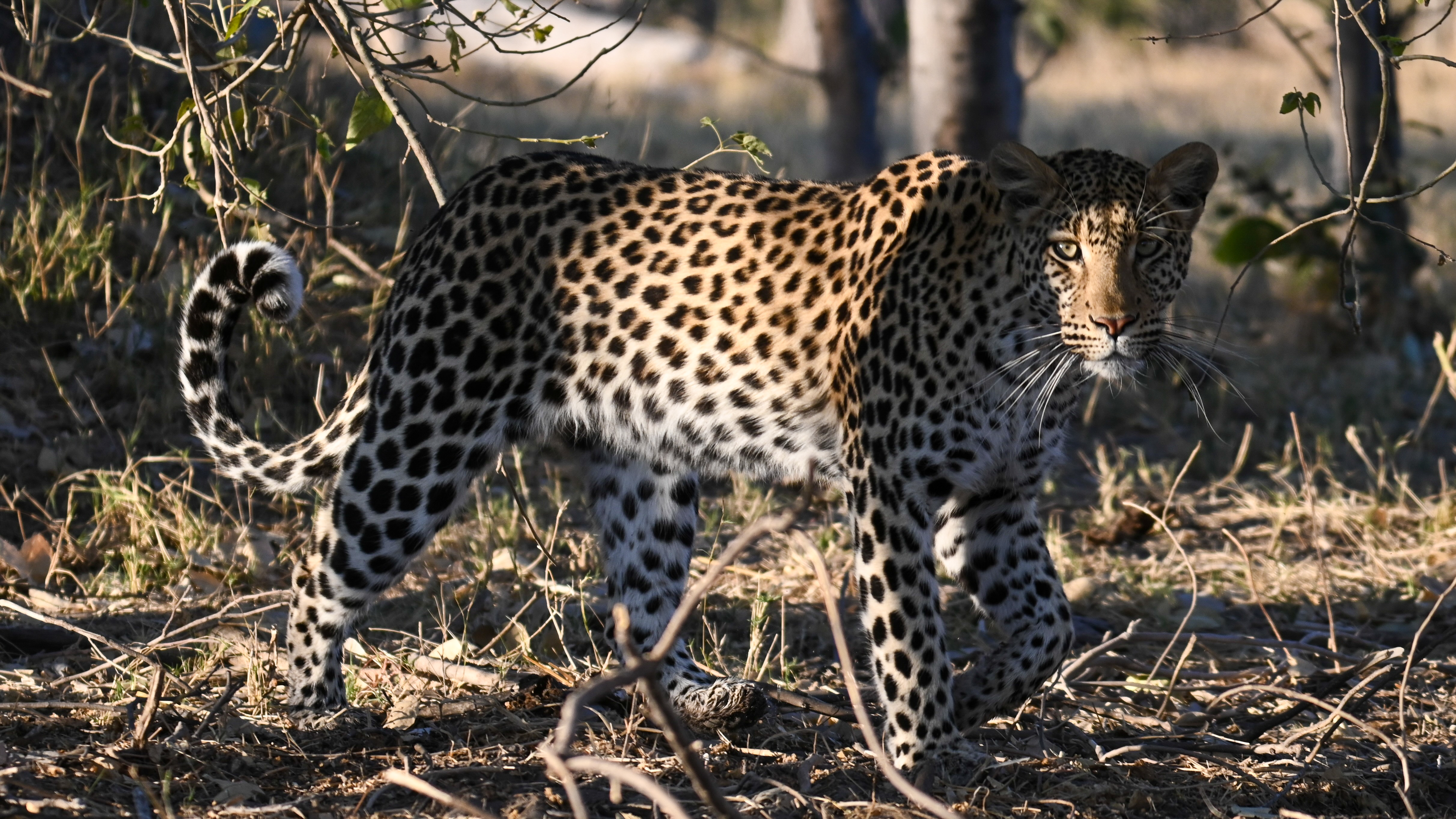

Although we stayed in paid campsites, they became more and more ‘wild’ with no gates or fences to keep out the animals. Once it was dark, we were not allowed to leave our camping spot, even for the bathrooms. Our final campsite had elephants walking through during the day and spotted hyena making the rounds at dinner time! Zara has grown from strength to strength with her bravery around animals, but the hyena walking right beside her as she sat under the stars eating her spaghetti bolognese was a step too far! I’m not sure who was more scared – Zara or the hyena when she stood up and bellowed at them to leave her alone, sending them scurrying hurriedly back to the safety of the bushes!
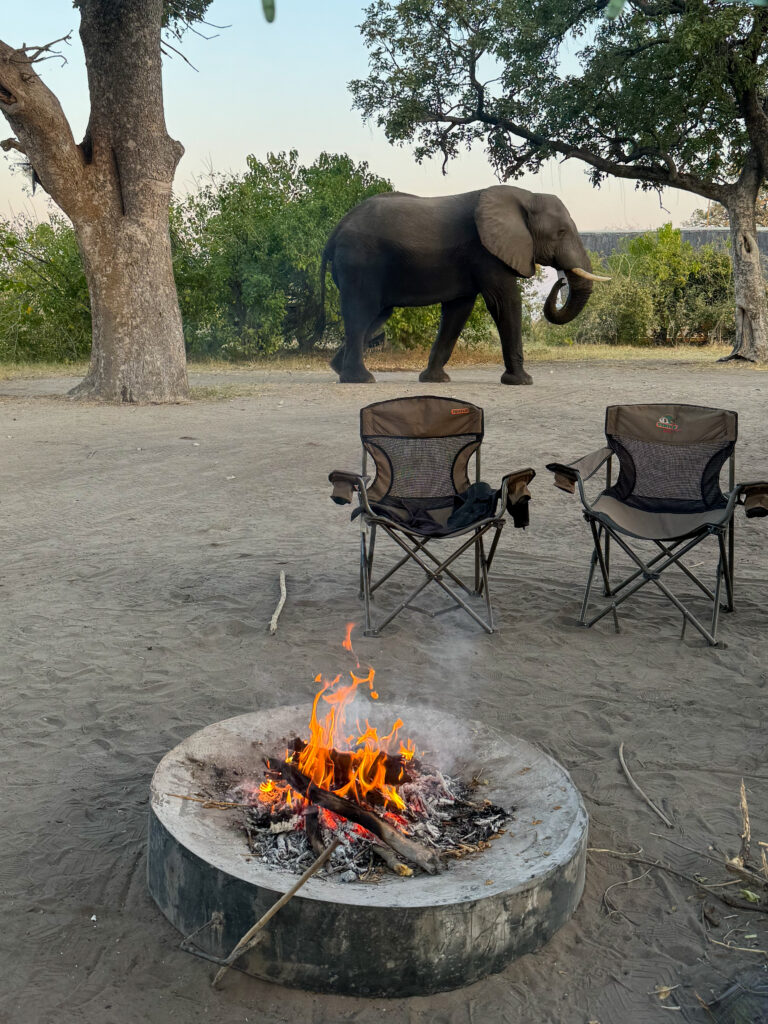
This was a group of 3 lioness and 8 adorable cubs playing and resting, with the male lion chilling out just around the corner:
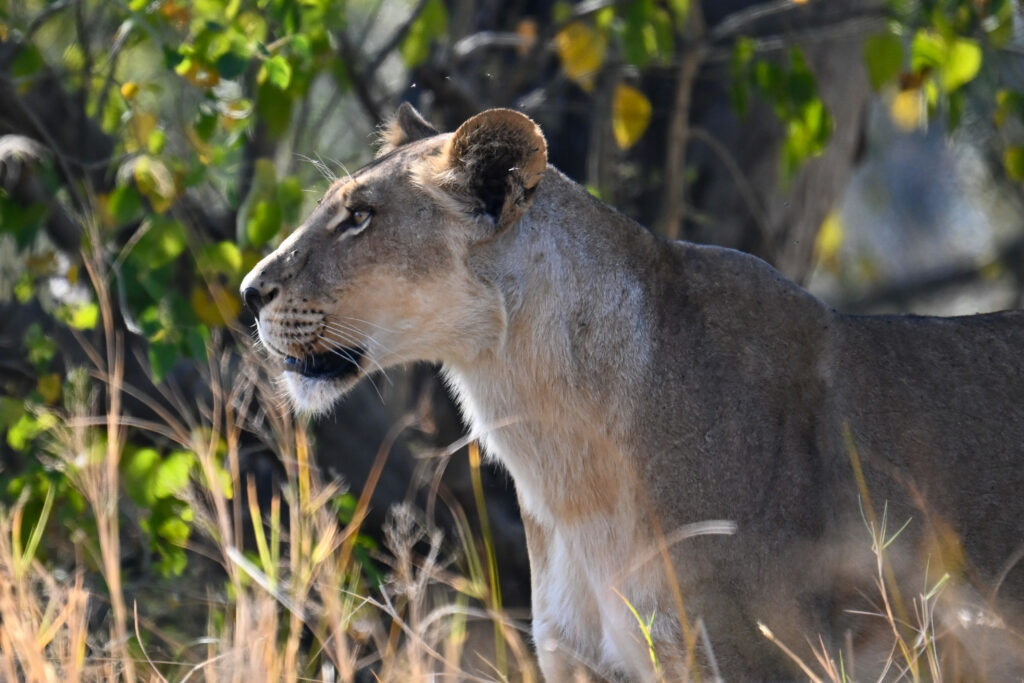
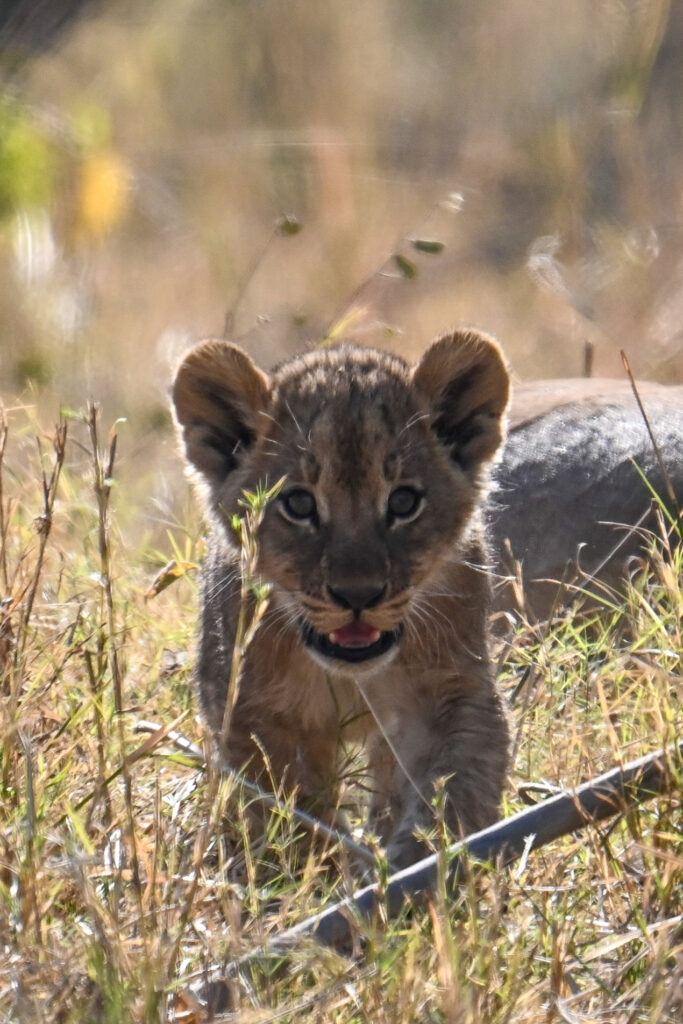
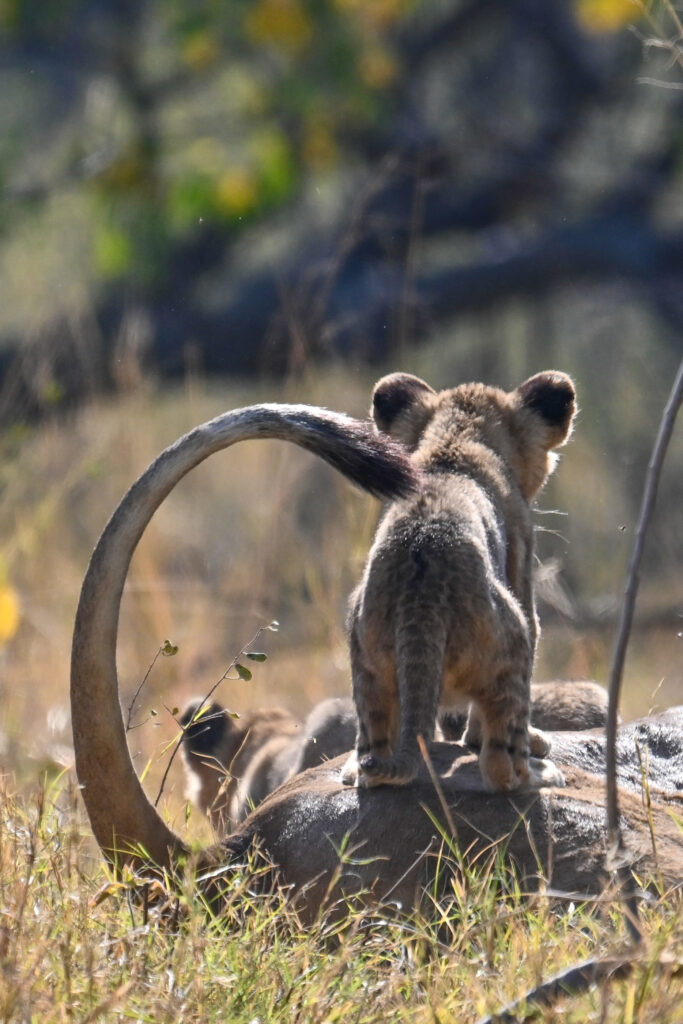
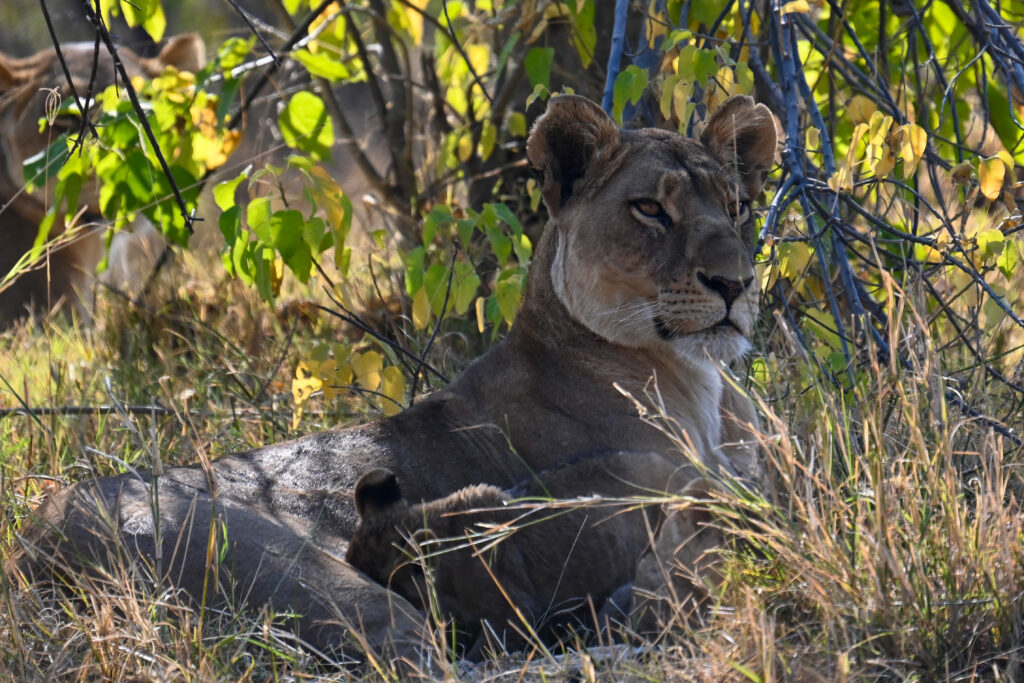
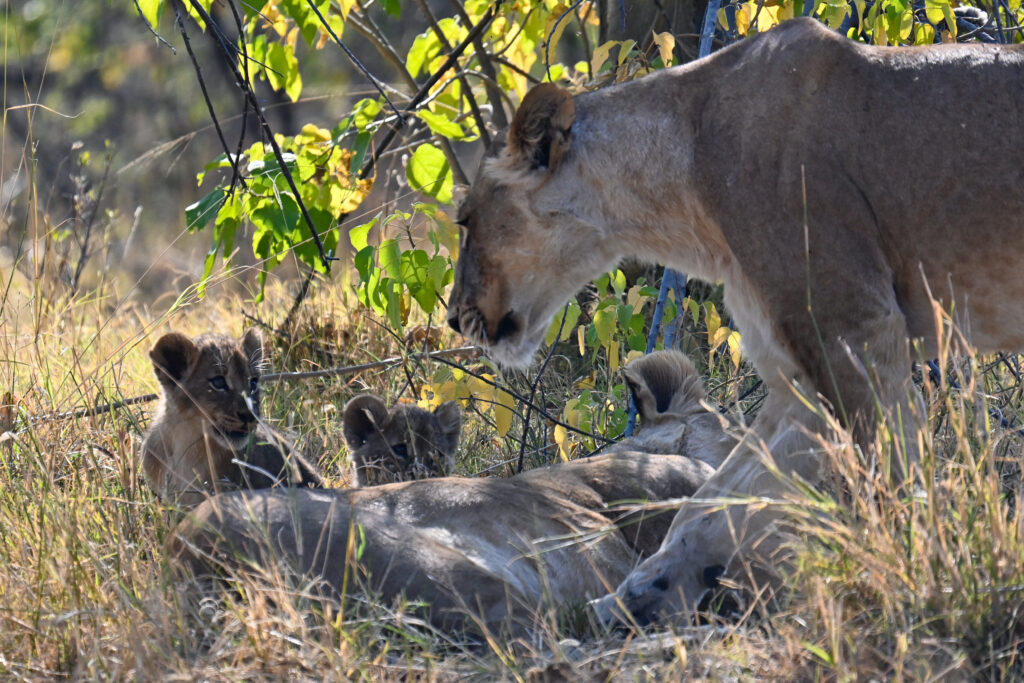
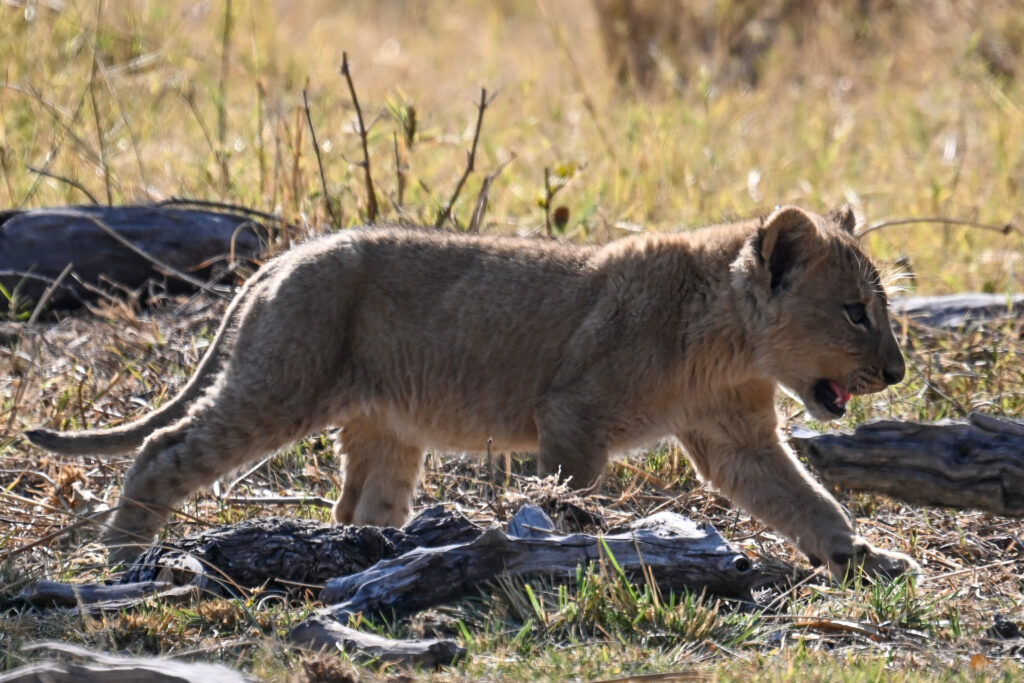
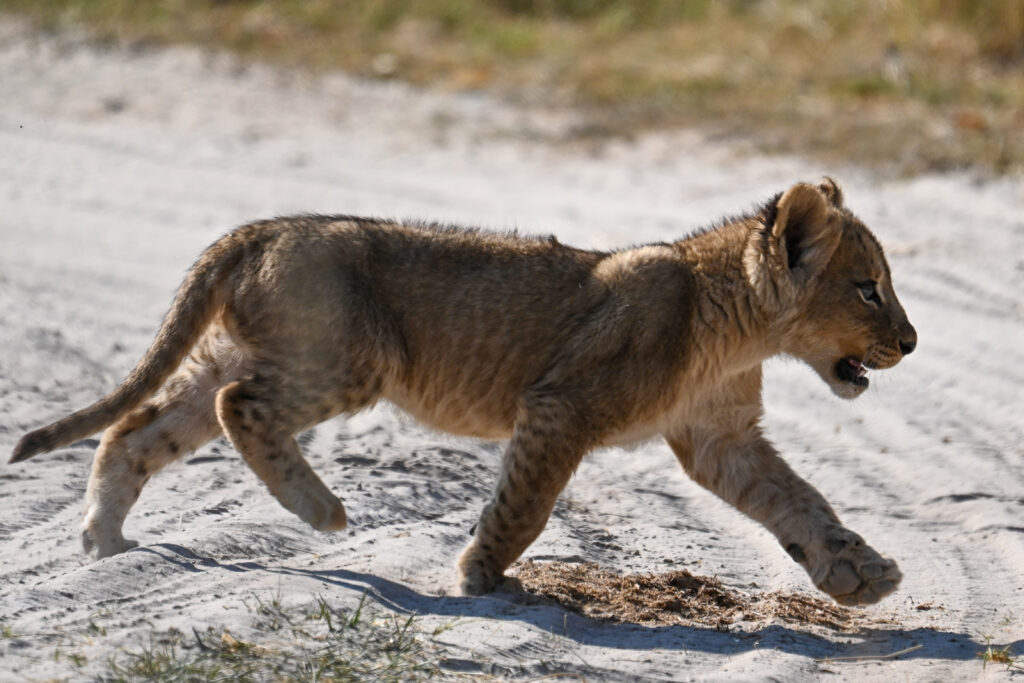
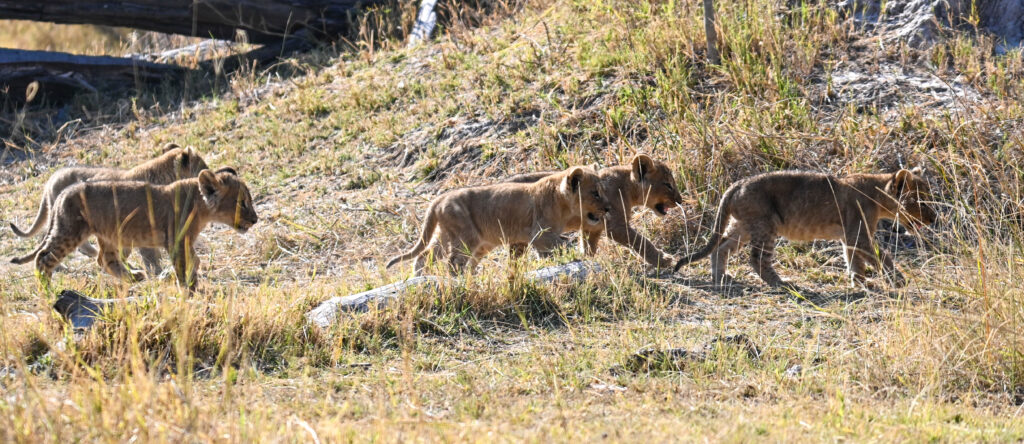
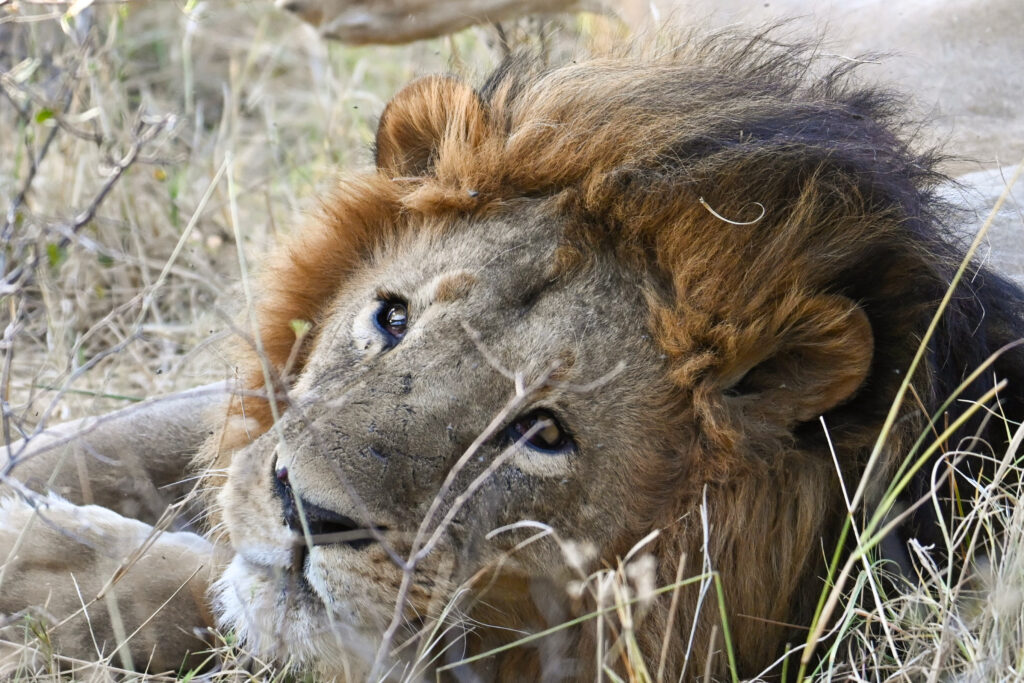

This was an African Wild Dog den with 9 adults and 9 pups – watching the way the adults guarded the den and regurgitated food for the pups (they must have had a kill nearby) was incredible to watch:
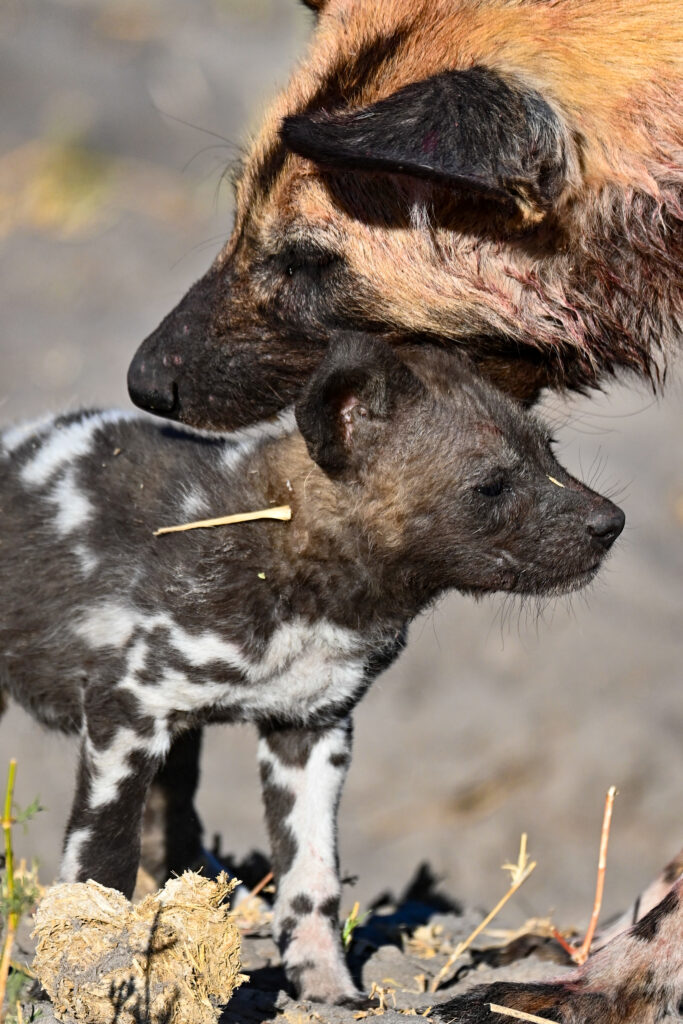
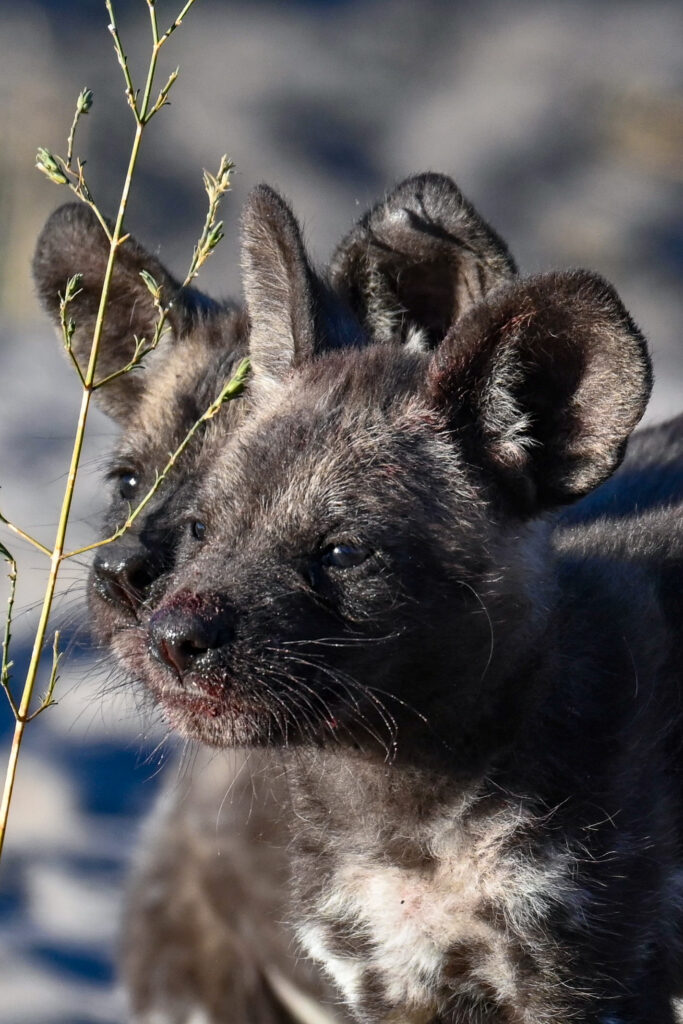
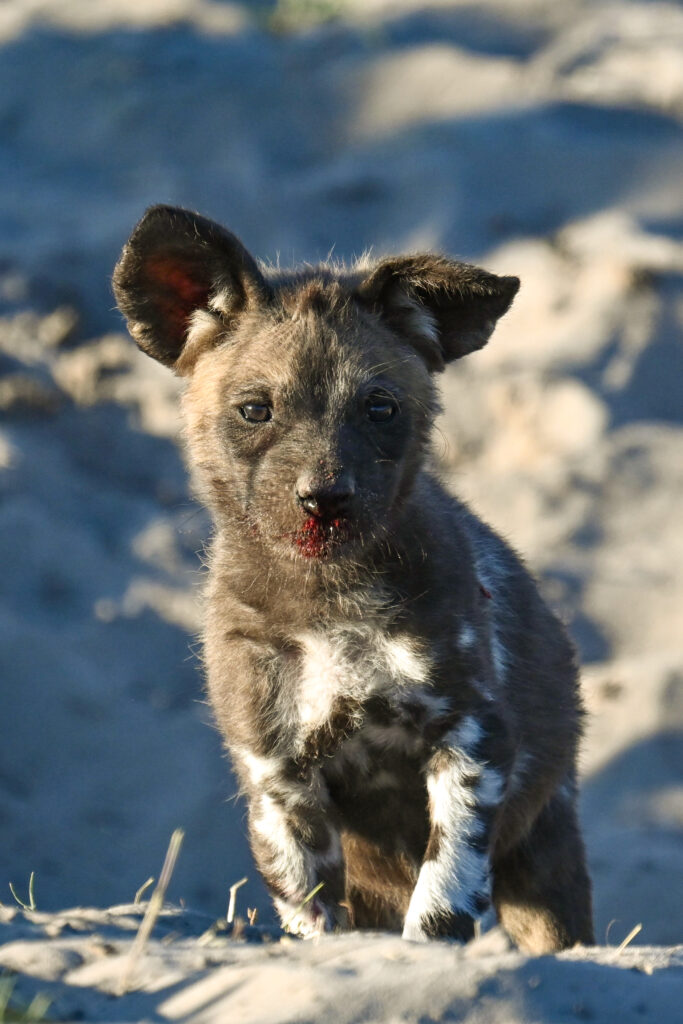

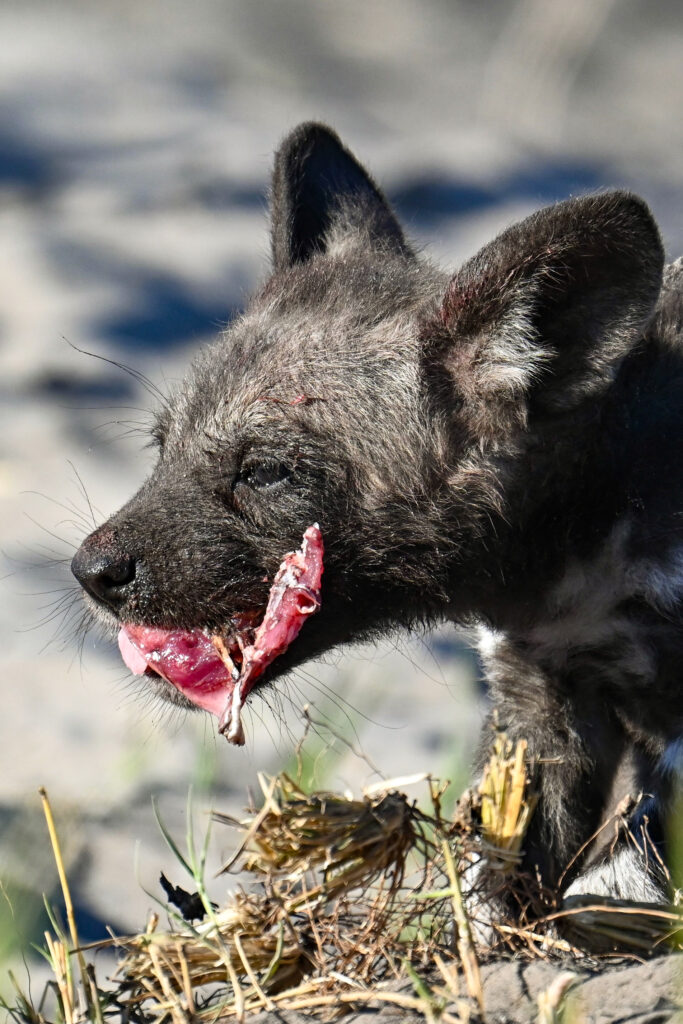
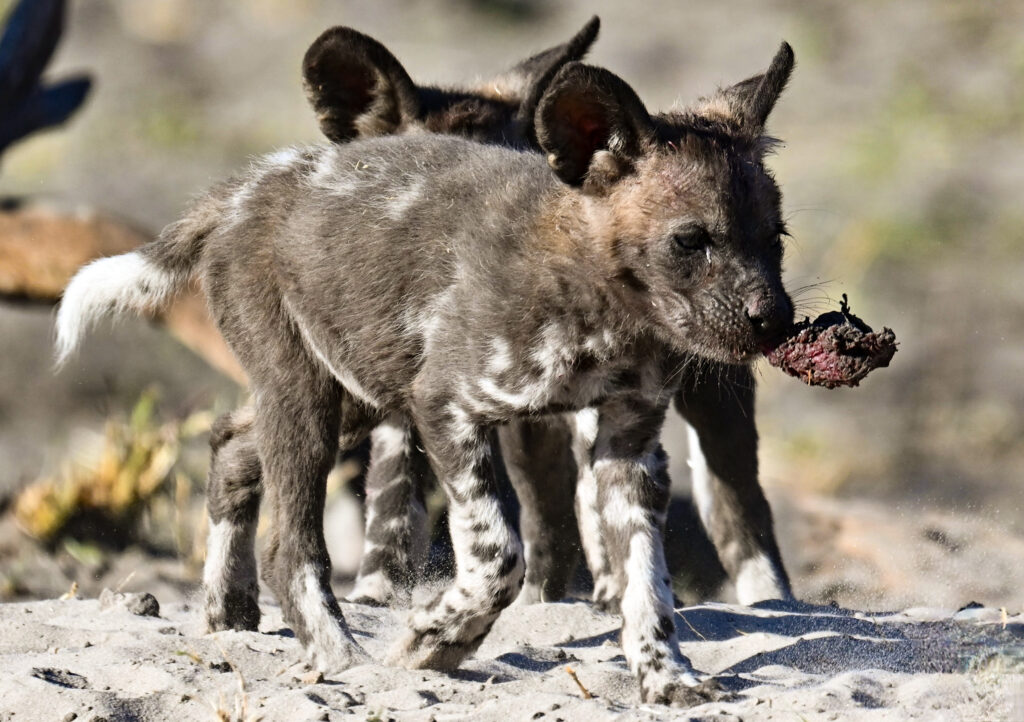
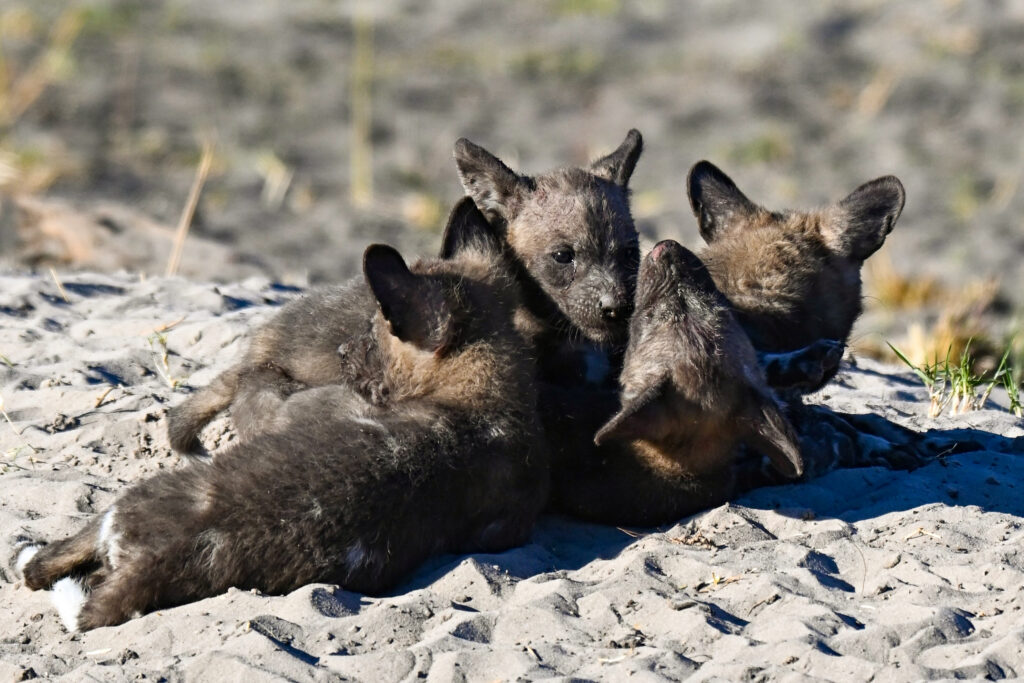
Hyena are a little spooky at night with their repertoire of calls, laughs and howls, but they are a funny sight during the daylight hours, and the wee cubs playing outside their den were pretty cute:
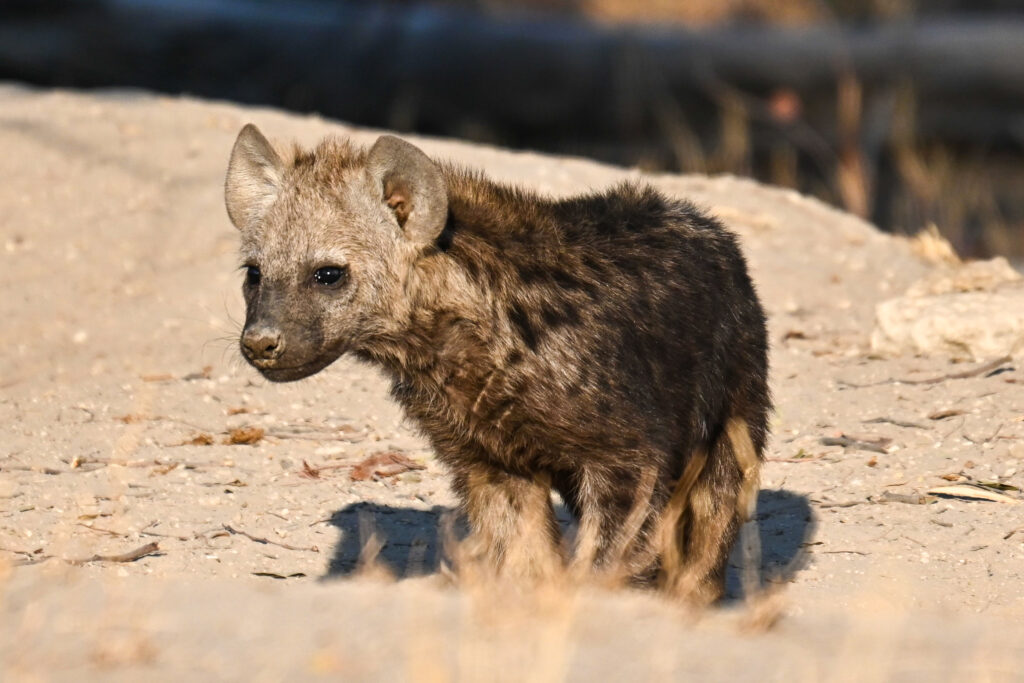
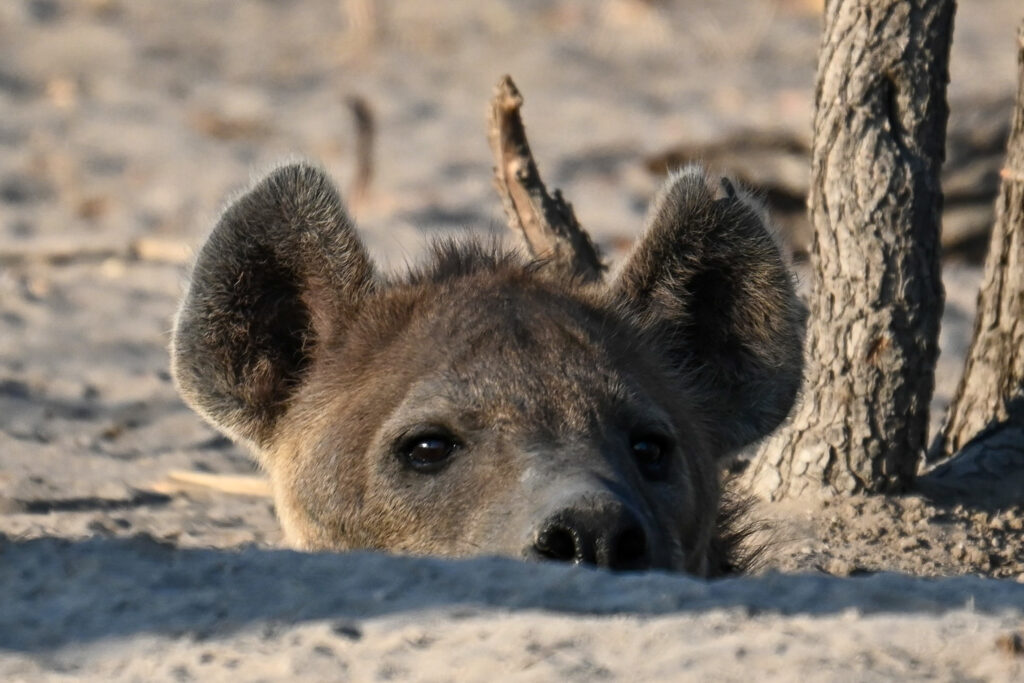
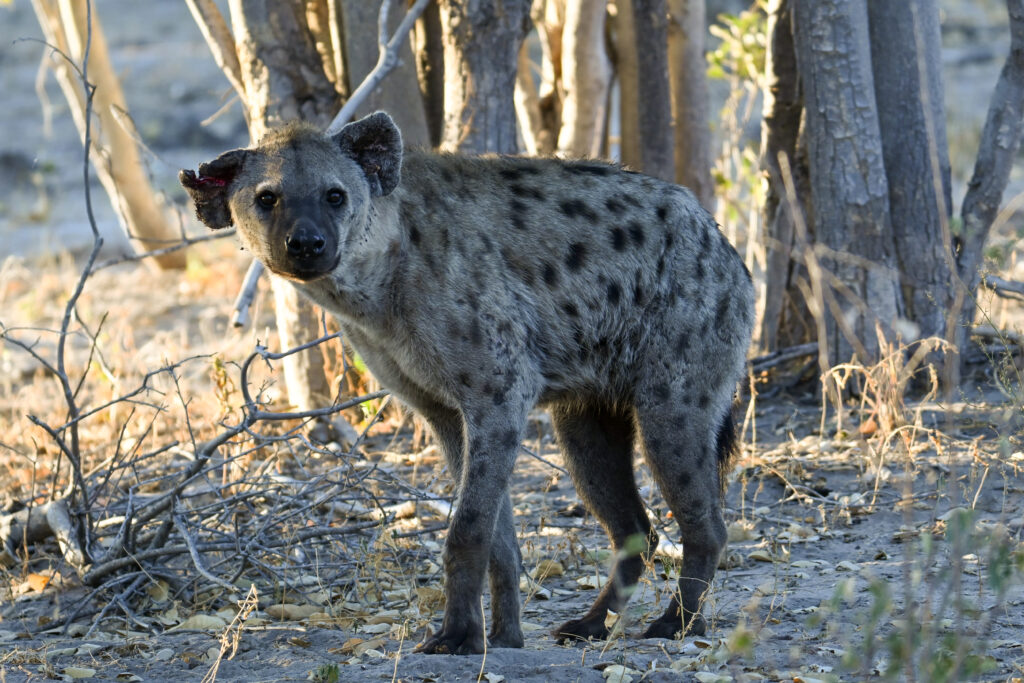
We drove a long way, which took even longer as a lot of the roads in this area are sand roads so it’s slow going. The kids are great at spotting animals, and are often deep into our guide books to read up about what they might see, and to share facts when we find something new. They both had a go at driving too!
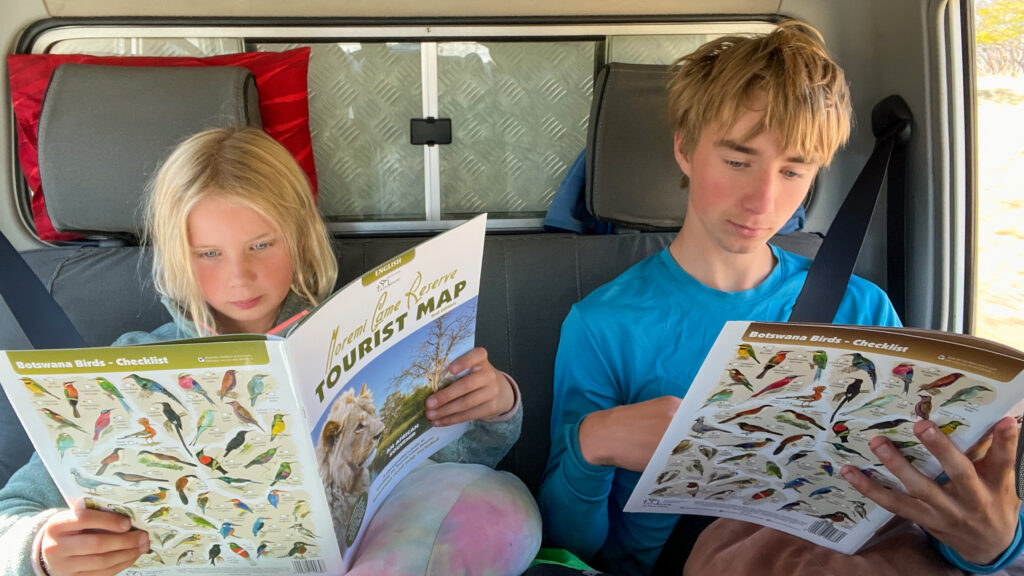
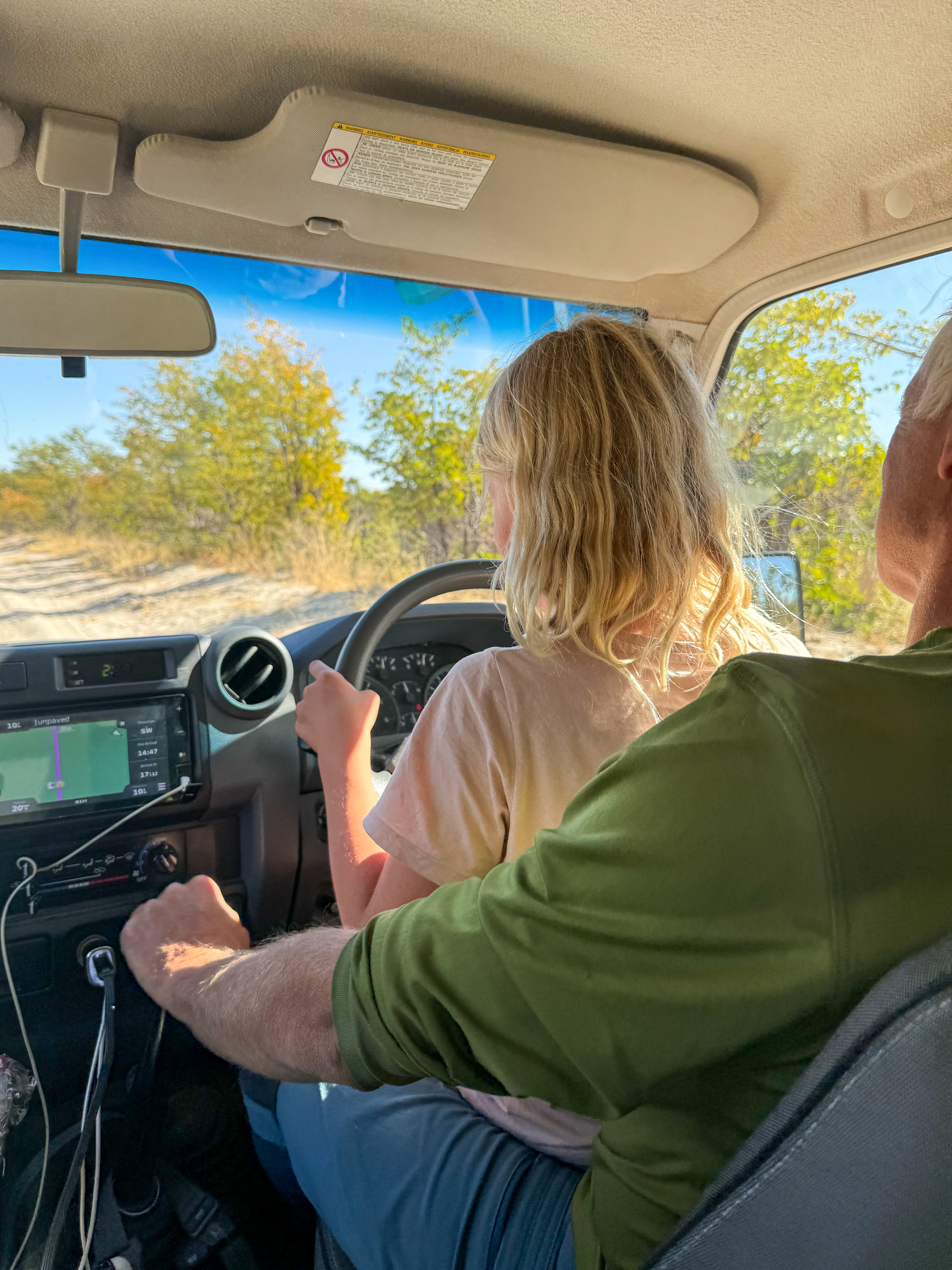

Termites and termite hills are an important part of the African ecosystem for a myriad of reasons, one of which is they provide relief in an otherwise flat expanse of the delta. The termite hills are everywhere, even in the towns, as are the bones of animals.

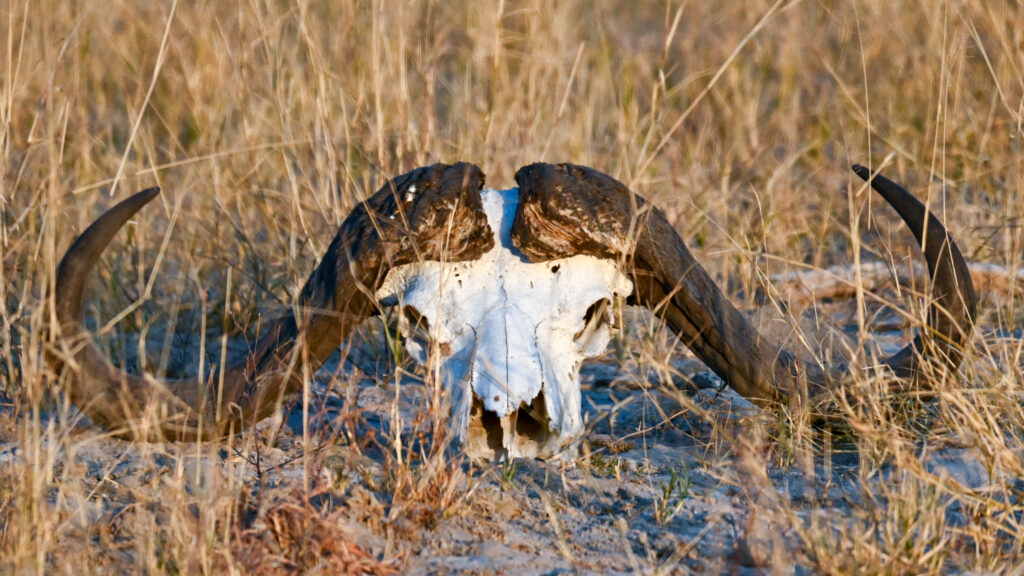
We saw lots of new animals and birds in Botswana, but we still love watching the elephants and the antelopes:
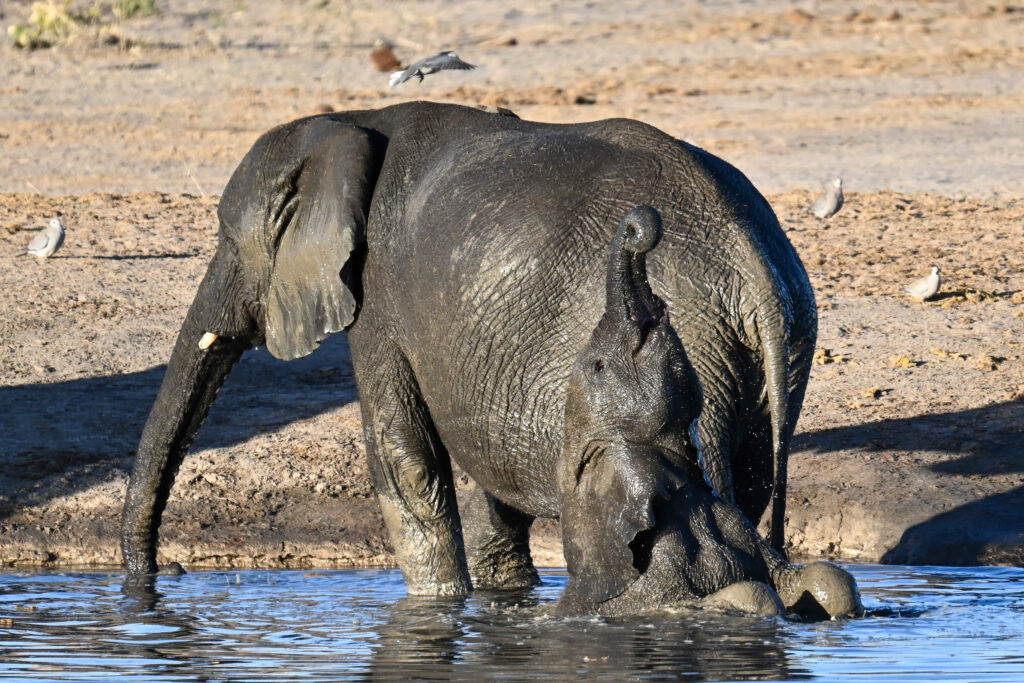
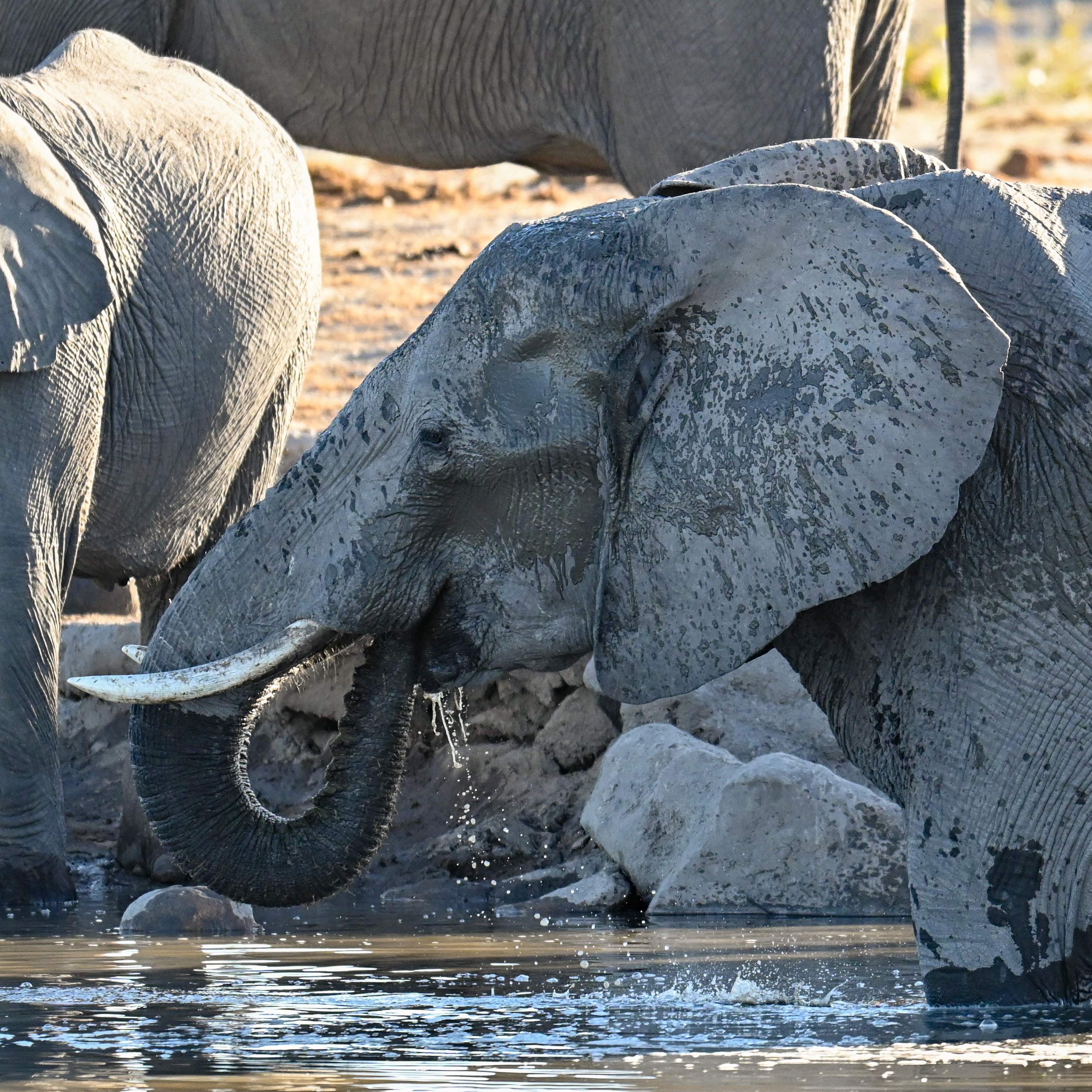

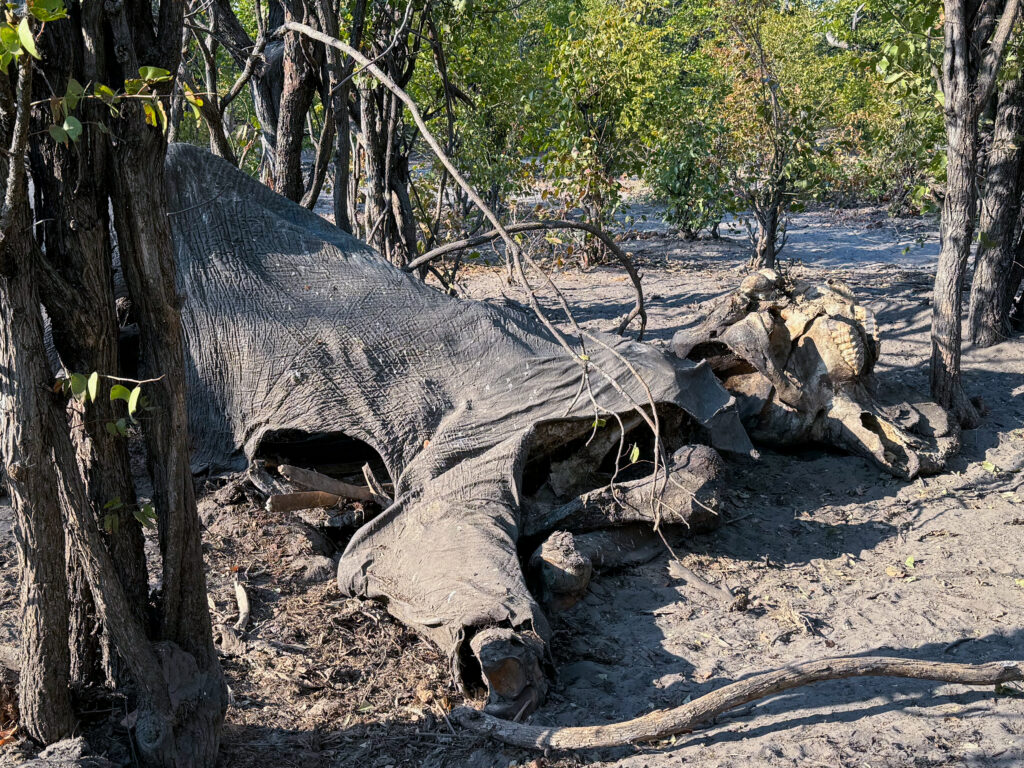
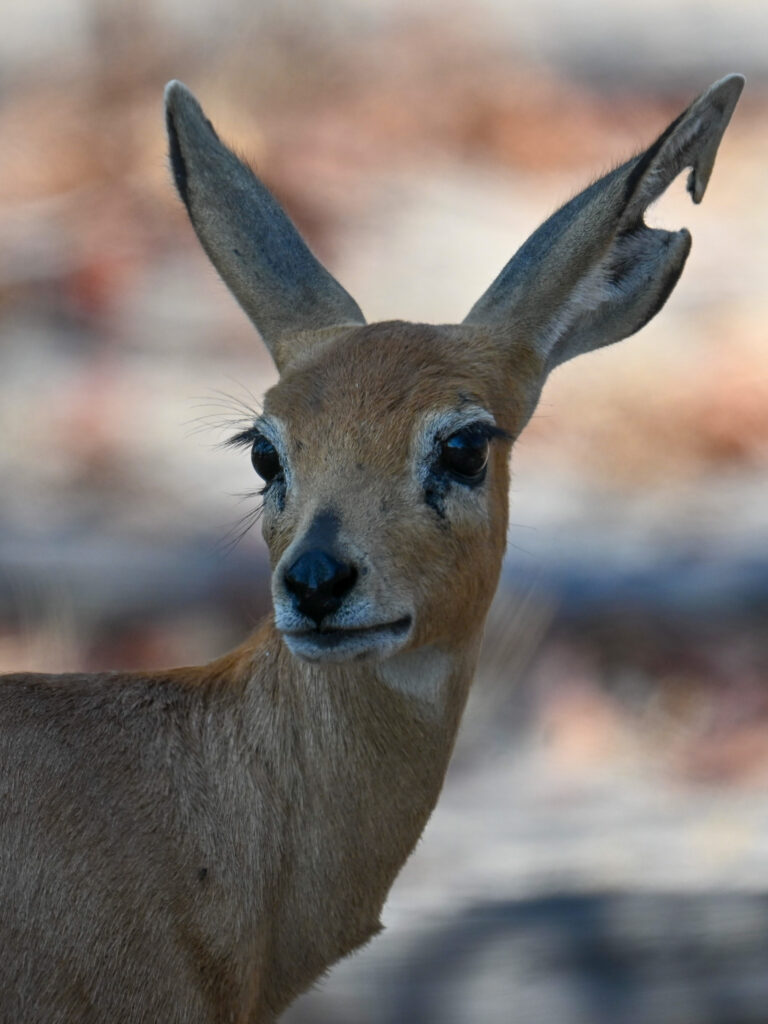
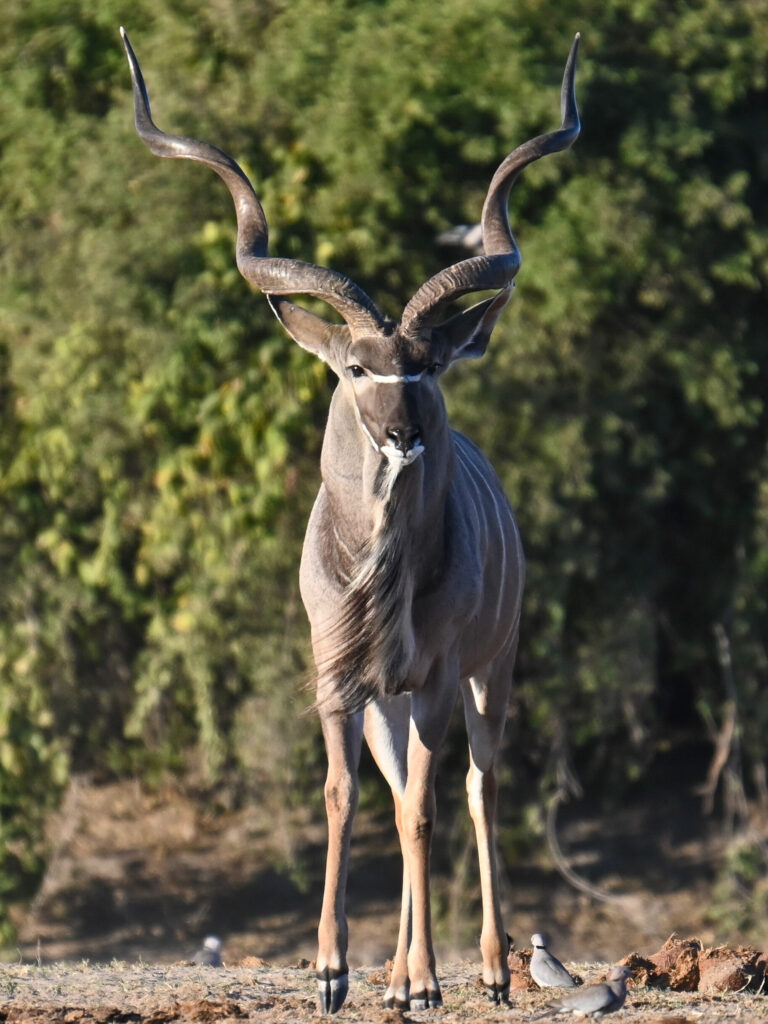
We came across a massive herd of buffalo – hundreds and hundreds of them from wee calves to adults:


Warthogs are so skittish and always seem to be in a hurry to get somewhere, although it doesn’t always look like they know where that somewhere actually is! We saw lots of little warthog piglets too!

There are monkeys and baboons all around this area. They can be a bit of a pain in the camps but they thankfully stayed away from our camping spots.
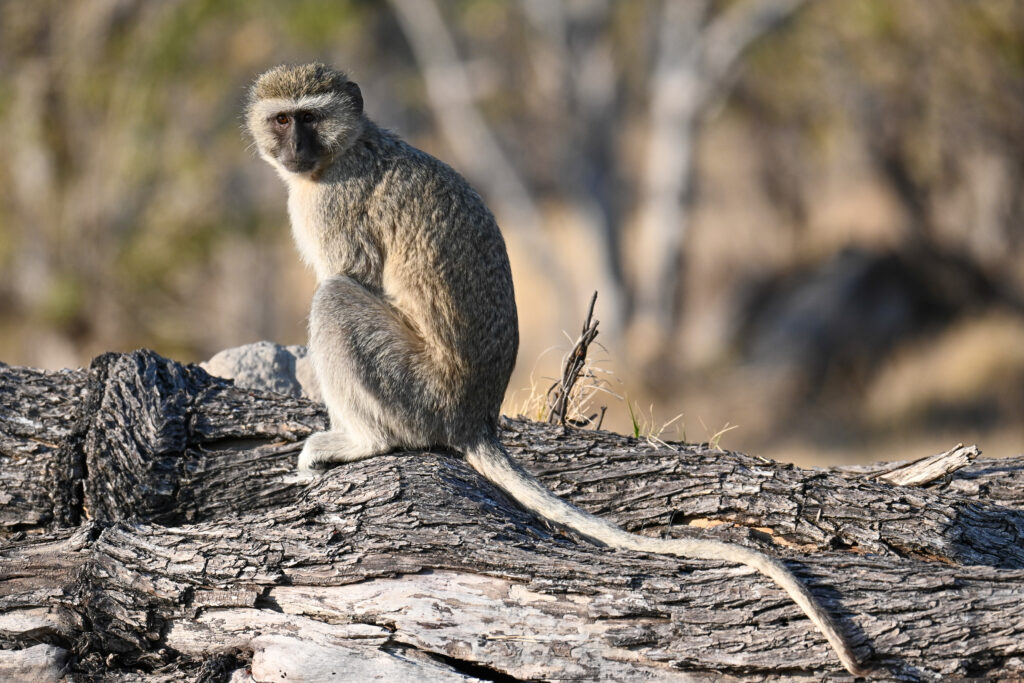
So many birds!
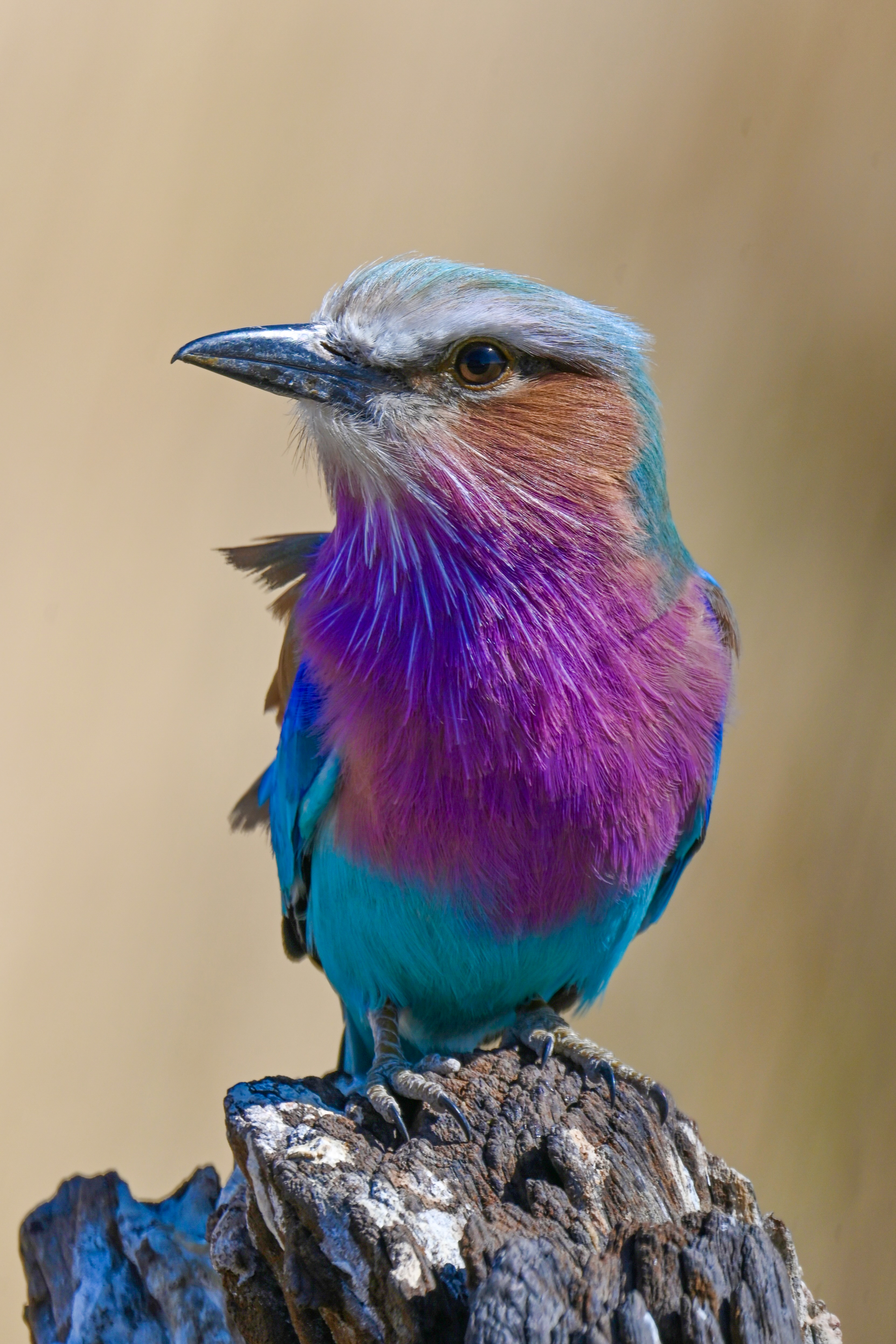
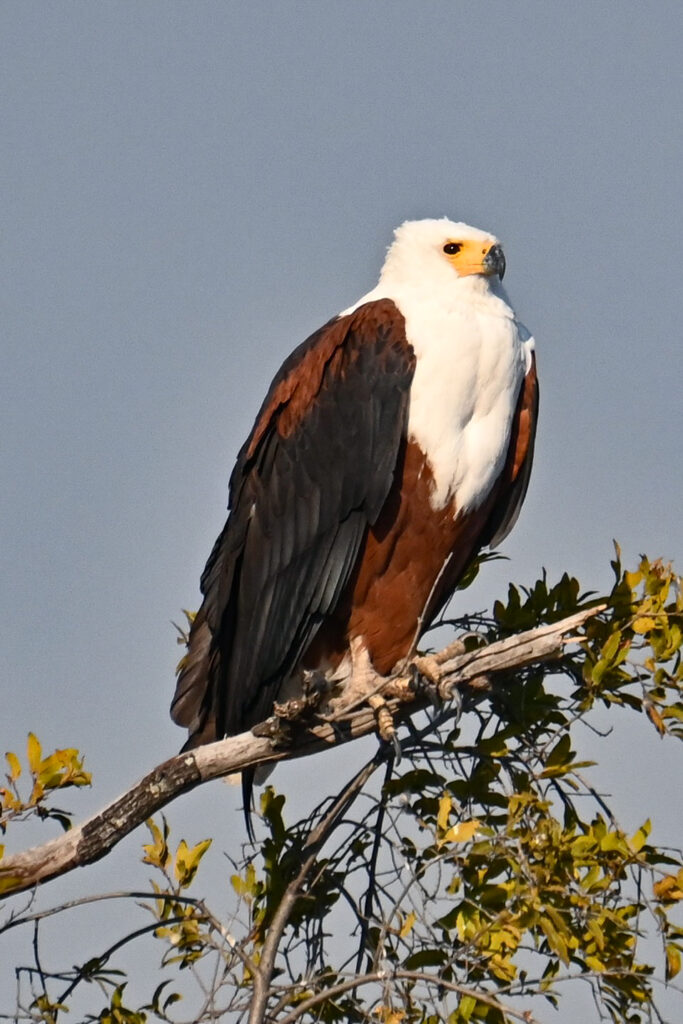
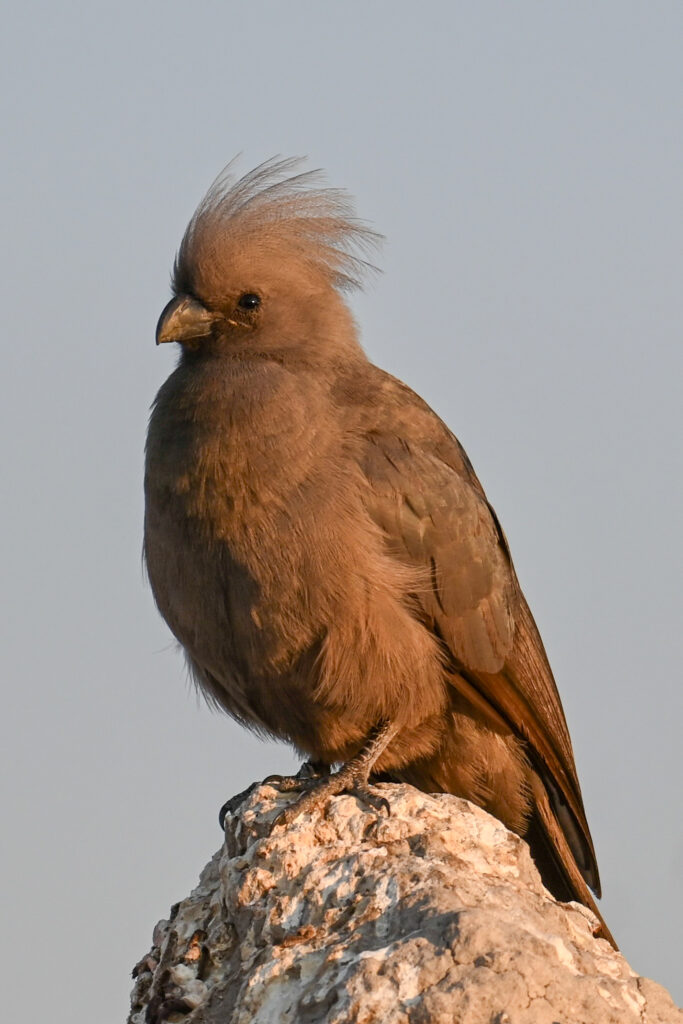
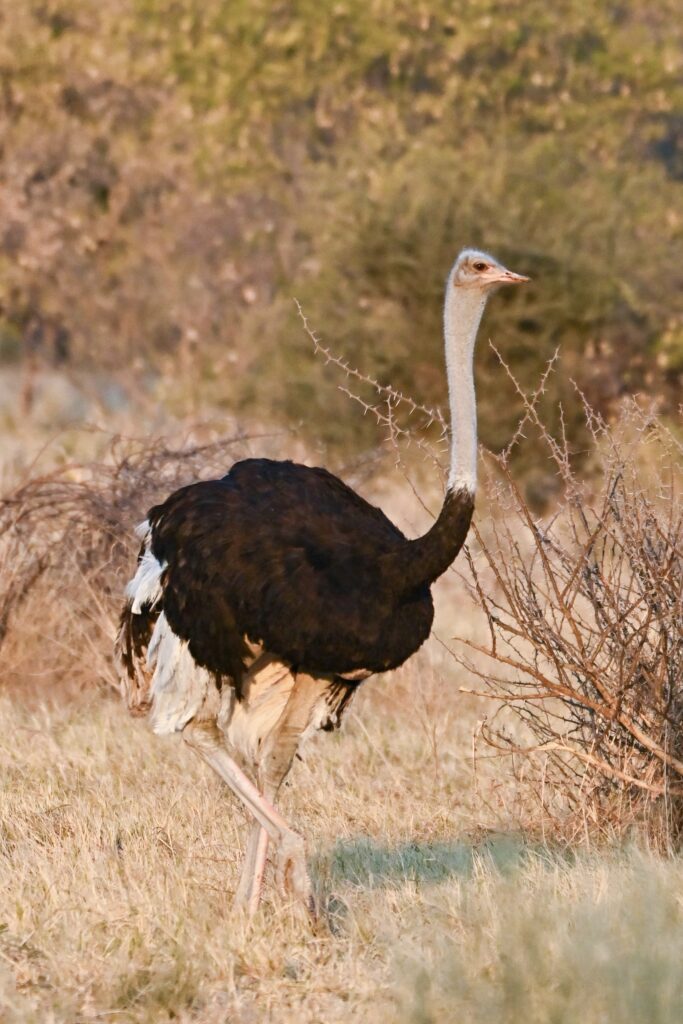
One day we had a chill day outside (somewhere safe) reading, playing games, and watching for animals across the river. Lucas decided to create a maze for us all to do. It took him about 5 hours but it was an absolute masterpiece with portals, mini games, bonus levels, and some brain-bending riddles!
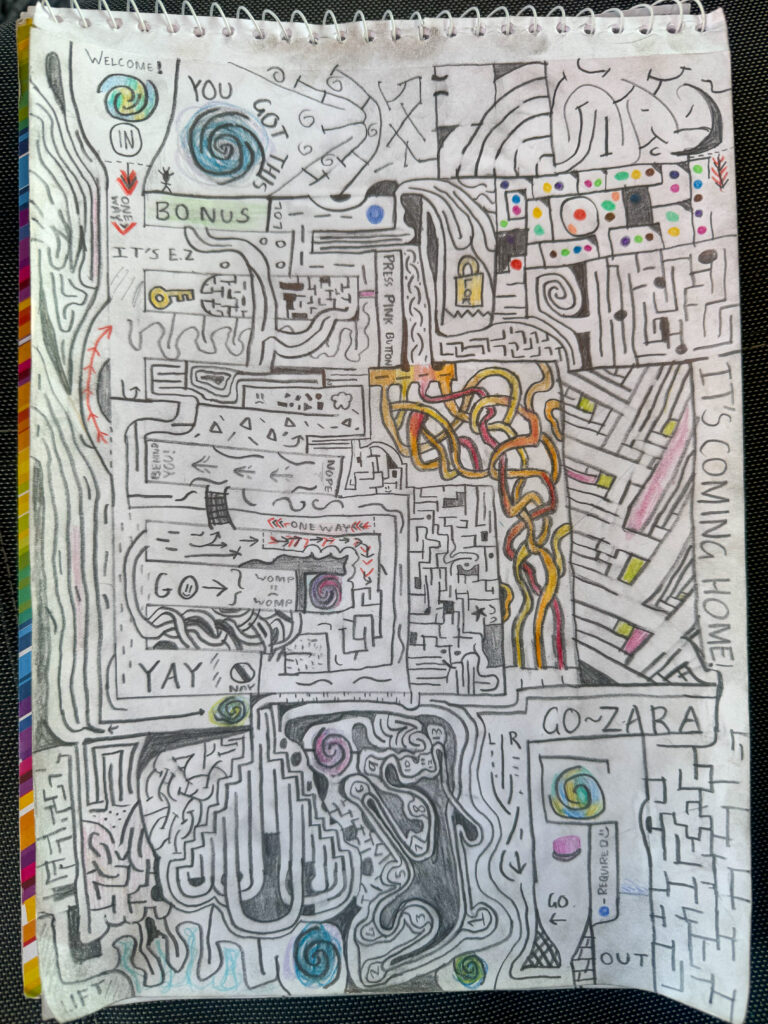
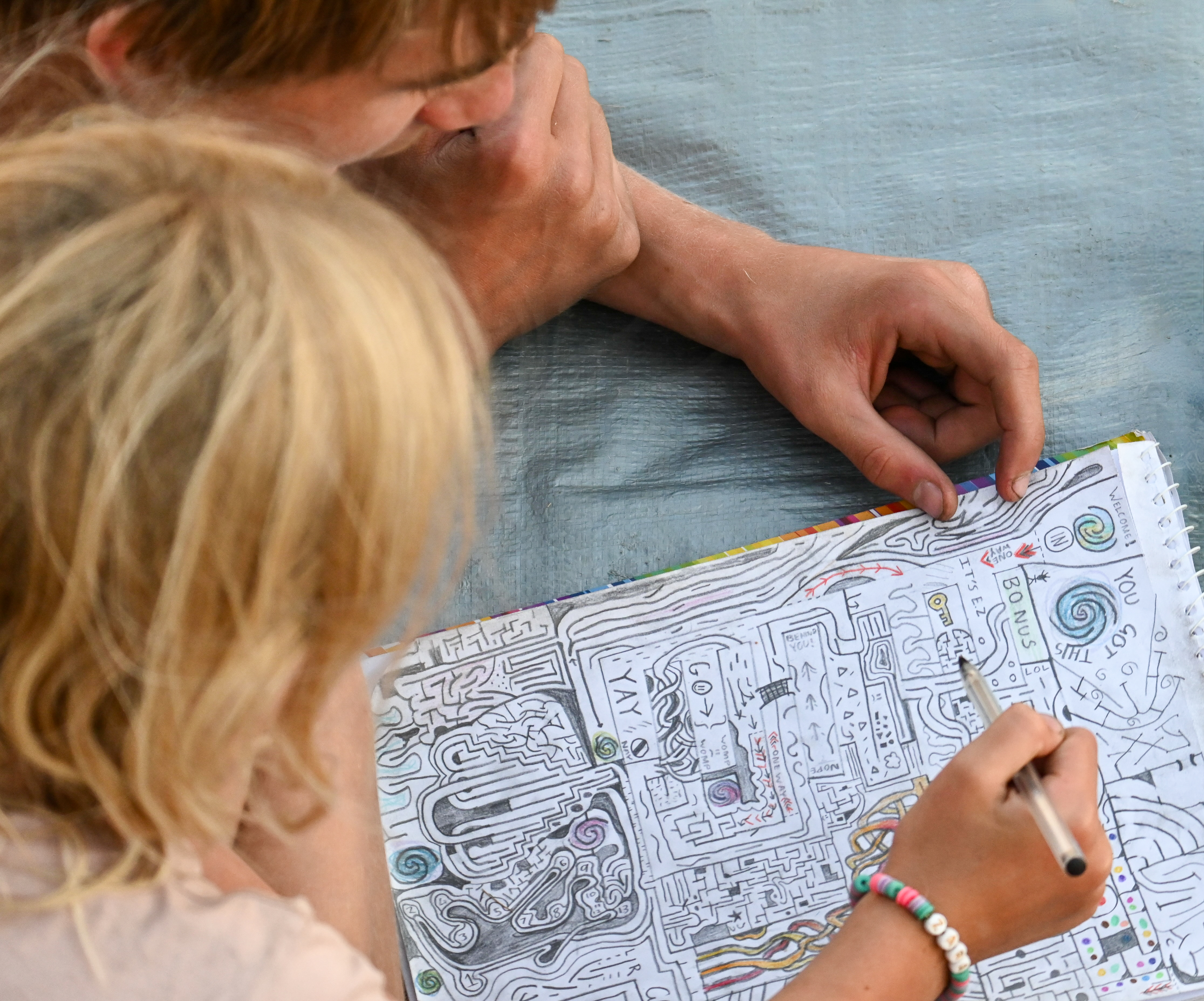
Many times we saw animals that turned out to be a termite hill or a log or a bush…but you keep looking anyway because you never know when a log will turn out to be a lion, oh no it’s 2, actually I think it’s 4, far out it’s 9 lions snoozing under a tree!
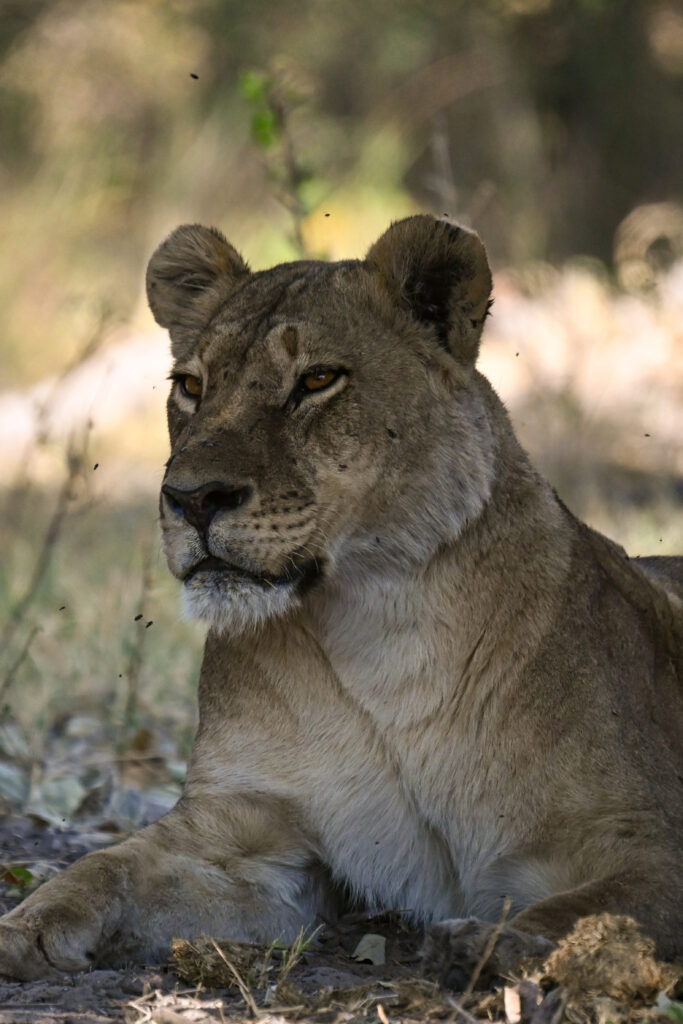
We had such special experiences with so many animals – so many “Oh wow!” moments! So very special!
From here we head south through Botswana – it’s a relatively long way to drive in a reasonably short timeframe but we’re excited for the adventures it will bring.
Wow that’s so awesome guys!!!!!
It makes NZ seem boring
I had to go back and re-read all your Africa blogs on my laptop rather than my phone so I could get a better look at all the amazing photos of the animals – just stunning guys!!!! The memories you’ll have of being up close to the animals will be with you all forever!